Initial Impressions of Rio de Janeiro, Brazil
Initial Impressions of Rio de Janeiro, Brazil
Published October 22, 2020
Welcome to Caffeinated Excursions’ first blog post featuring the city of Rio de Janeiro! I moved to Brazil back in January of this year and wrote an “Initial Impressions of São Paulo” post after spending two weeks there. Since I’ve been in Rio for about a month now and plan to stay here for a while, I figured I’d write a similar post for Brazil’s most popular tourist destination and second largest city.
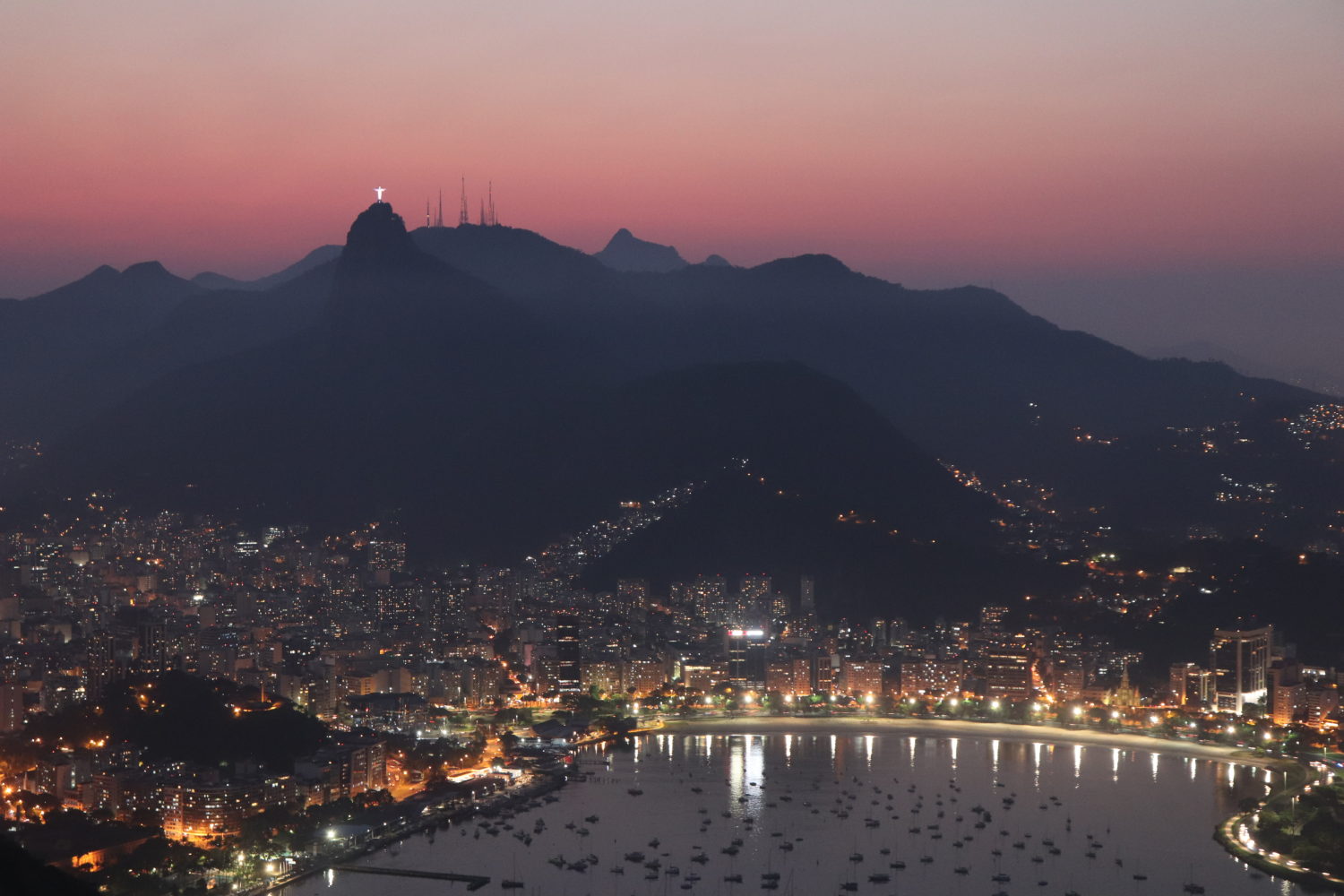
If you’ve never been to Rio before, I can bet that your number one concern is safety. This post will discuss that legitimate concern in detail, but let me say right off the bat that I’ve lived in Brazil for nine months now and spent time in over half a dozen cities both large and small. In almost a year, I’ve never experienced any safety issue so far, nor have I been the victim of pickpocketing or other theft.
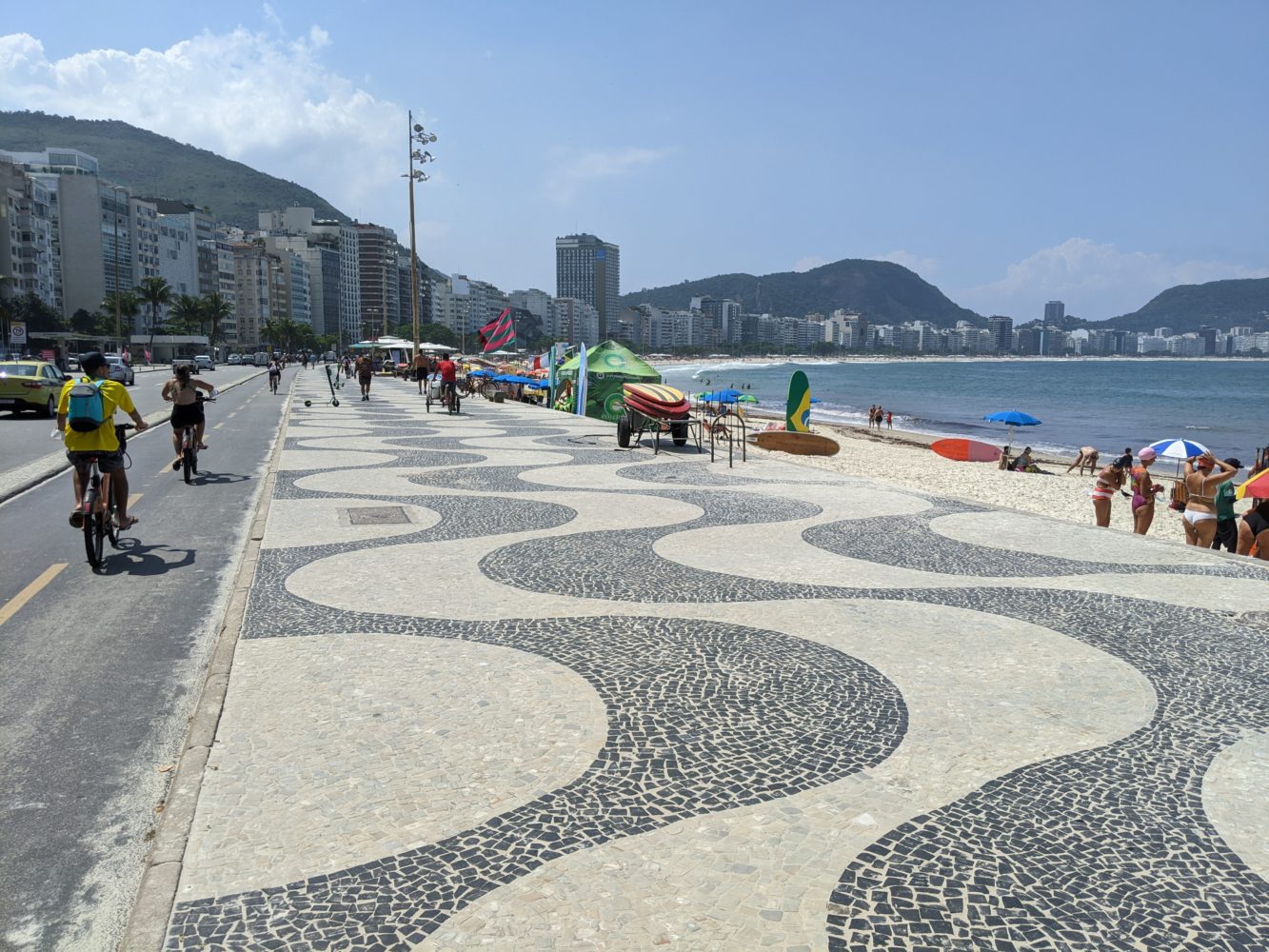
With that out of the way, I’m excited to report that my initial impressions of Rio have been incredibly positive. The natural geography of the city, with world-class beaches next to striking mountain cliffs, makes it a truly unique place to visit. I can basically guarantee that no other city on Earth has a similar vibe to Rio de Janeiro!
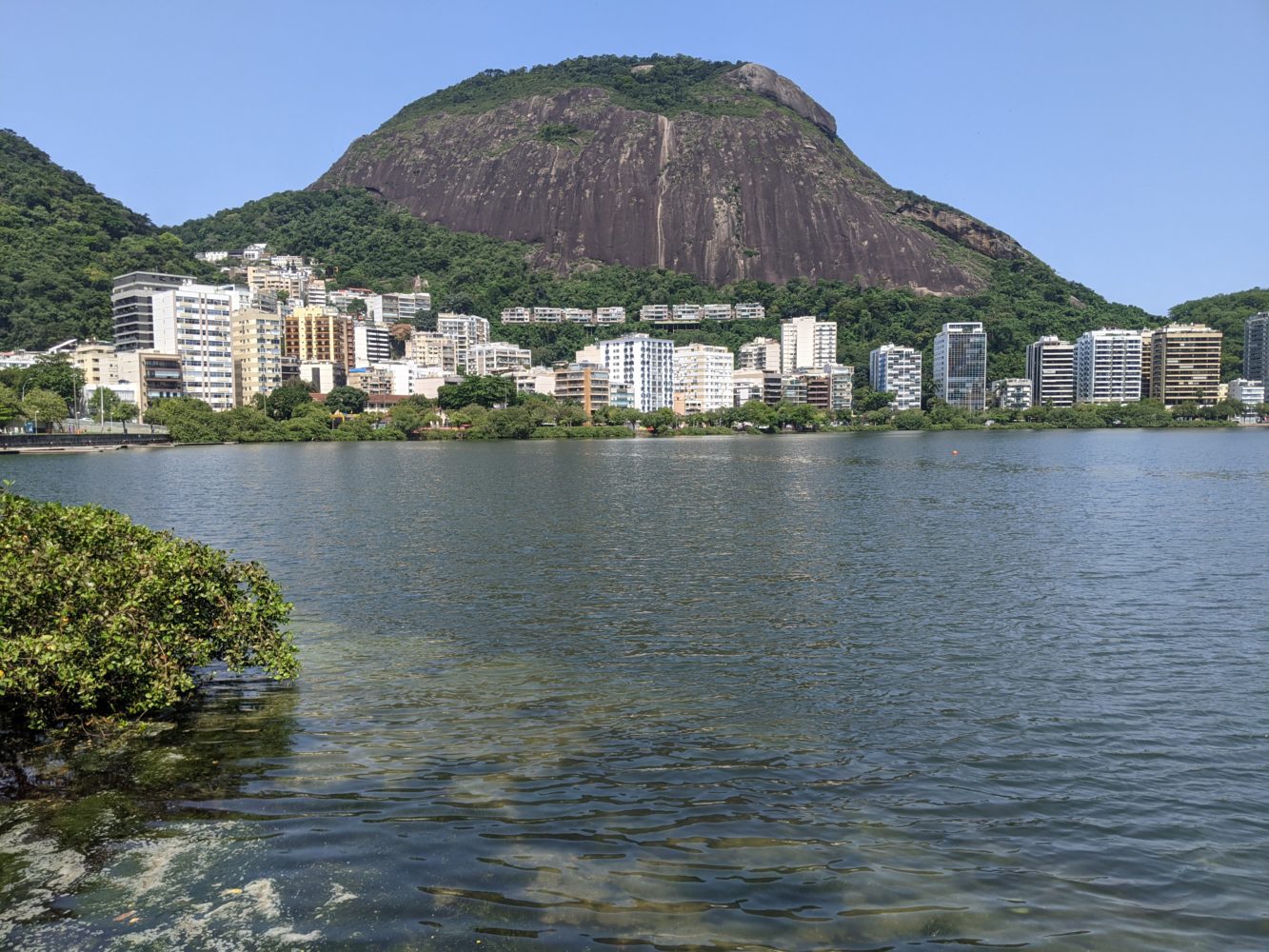
Here are some of the things I’ll discuss in this post. Click or tap any of the links to skip directly to that section!
Initial Impressions
1. What Makes Rio Special
Rio de Janeiro is a city of about 7 million people located on Brazil’s southeastern coast. It served as the capital of the country for over 100 years before the federal government was relocated to Brasília in 1960. As such, the city of Rio has a distinct ‘former glory’ vibe to it. That might be off-putting to some, but I actually like it a lot. It’s easy to feel like you’ve traveled back in time as you walk along many of the city streets.
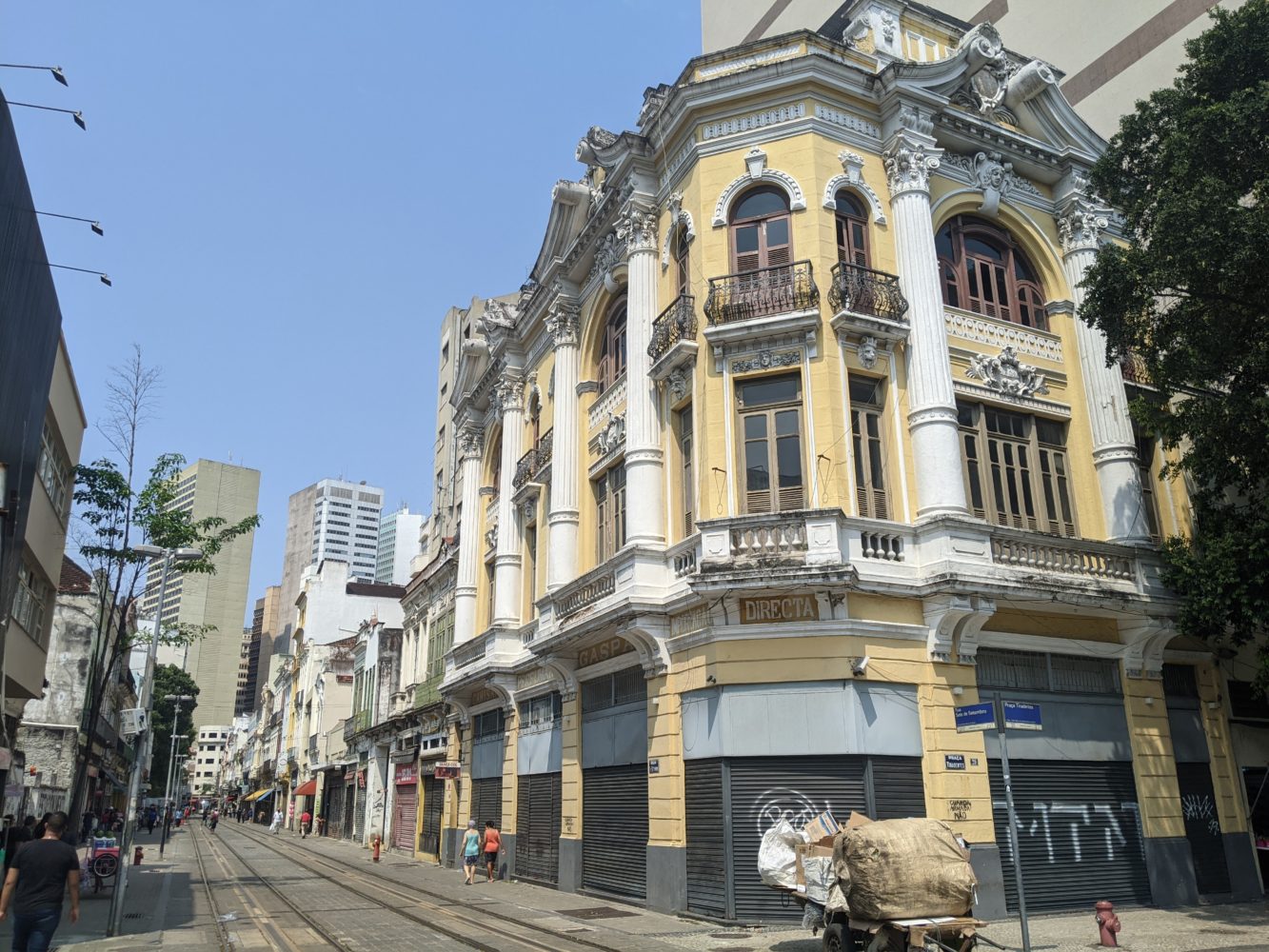
Most tourists visit Rio, however, for its white-sand urban beaches and mountain backdrops. Having traveled to beaches all over the world, I can confirm that Rio really does stand out among the top contenders. When I first came to Brazil, I chose to stay in São Paulo because it’s not as popular a destination as Rio. But Rio is absolutely worth the hype and won’t disappoint.
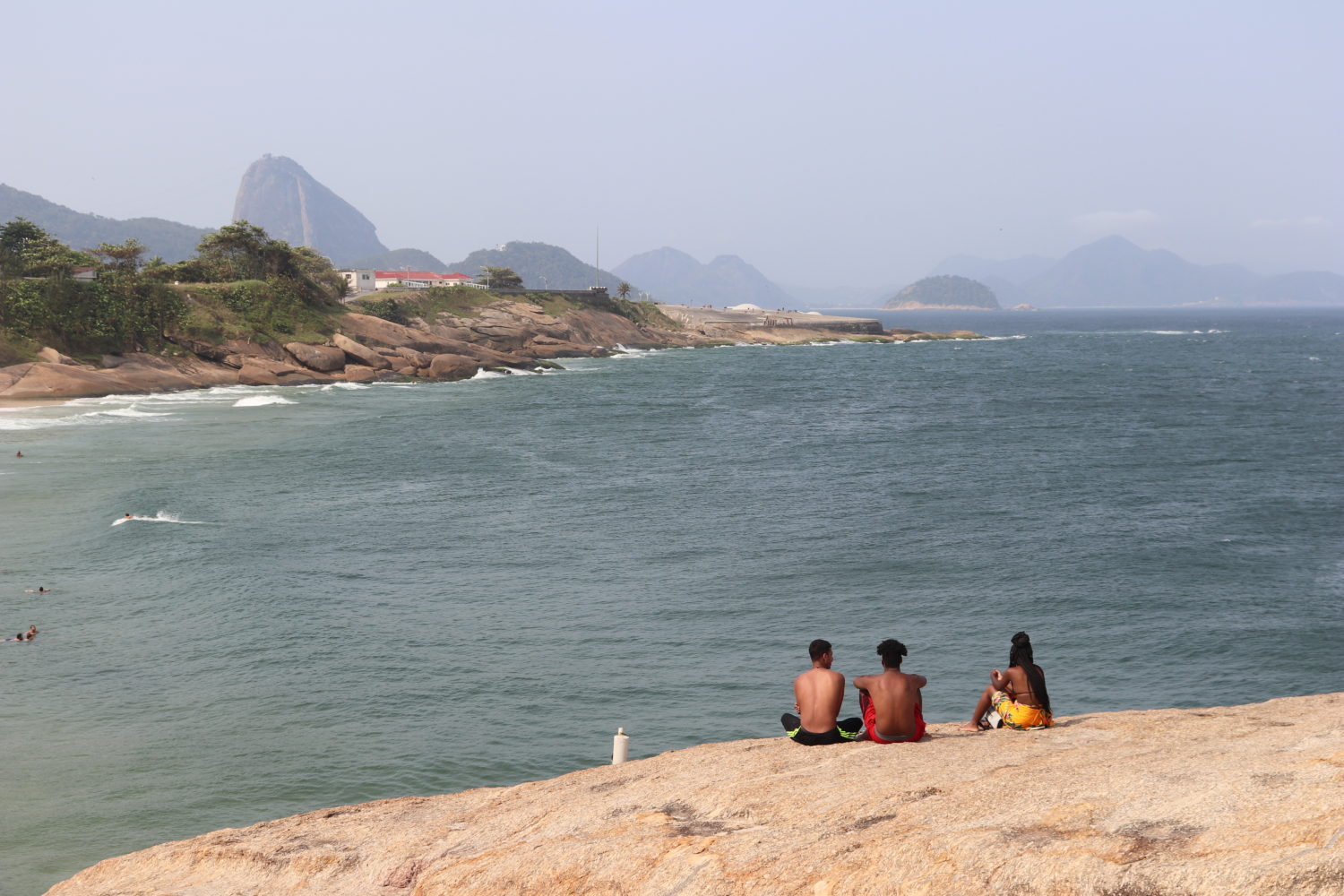
If you’re concerned that Rio is just another Disneyland-esque tourist trap, I can confirm that it’s not. The city is highly commercialized and there is a lot of tourist infrastructure. However, this doesn’t detract from the waterfronts or landscape views. I’m happy to say that Rio de Janeiro has never felt tacky or artificial to me.
2. The Two Most Famous Beaches
There are dozens of beaches to visit in Rio, but the two you can’t miss are Copacabana and Ipanema. One of the things I truly love about Rio is that you can actually walk from the far end of Copacabana (known as ‘Leme’) to the far end of Ipanema (known as ‘Leblon’) in a single go. It’s about a 7 kilometer or 4.5 mile walk one way, but I highly recommend it if you love to explore on foot and are only spending a week or less in the city.
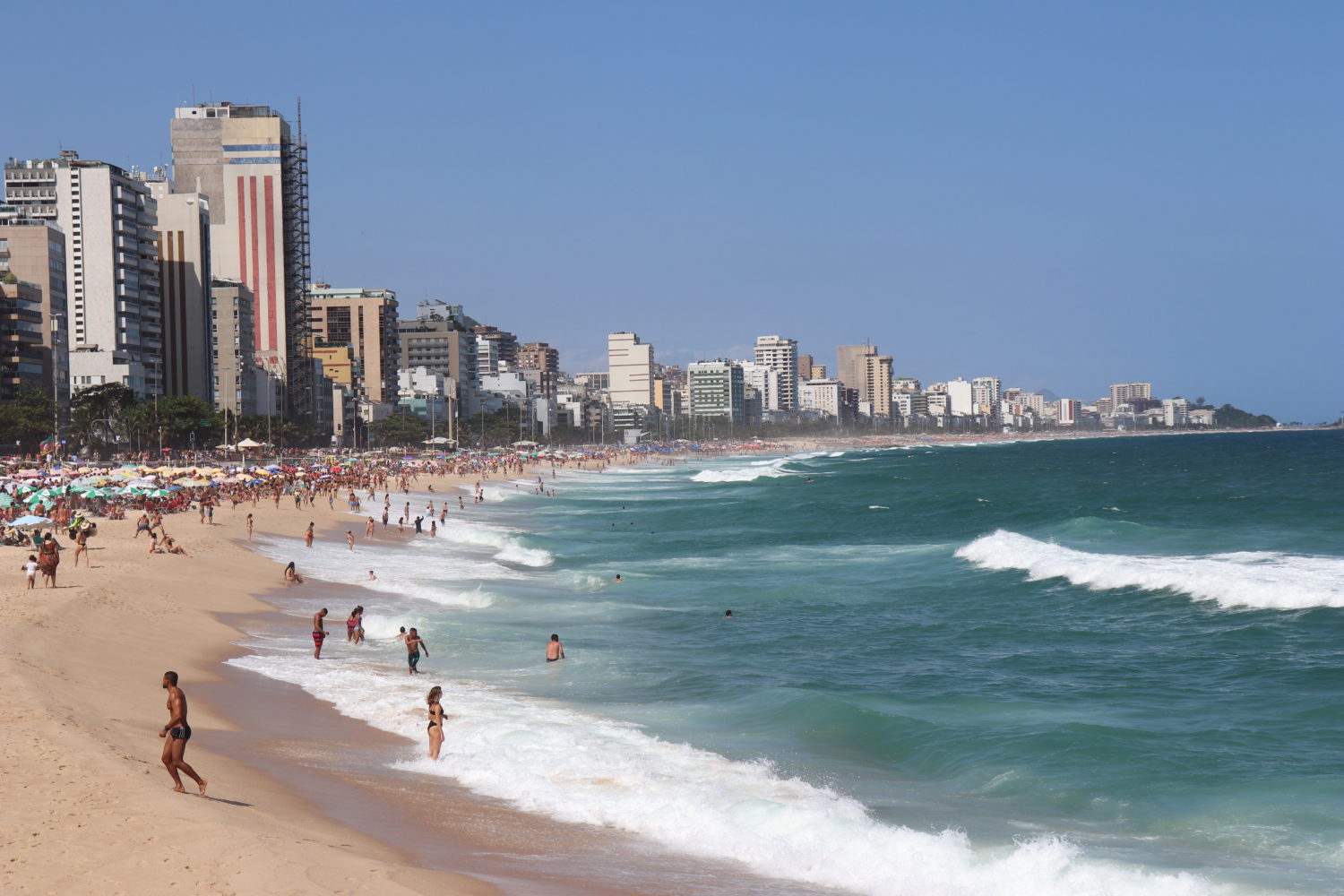
Copacabana
Of the two beaches, Copacabana is located on Rio’s southeast coast. Some travel blogs say that it historically had a reputation for being dirty or trashy, but I’m living in this area and can say that as of October 2020, I don’t think that’s true at all; maybe sanitation and security have improved significantly in recent years.
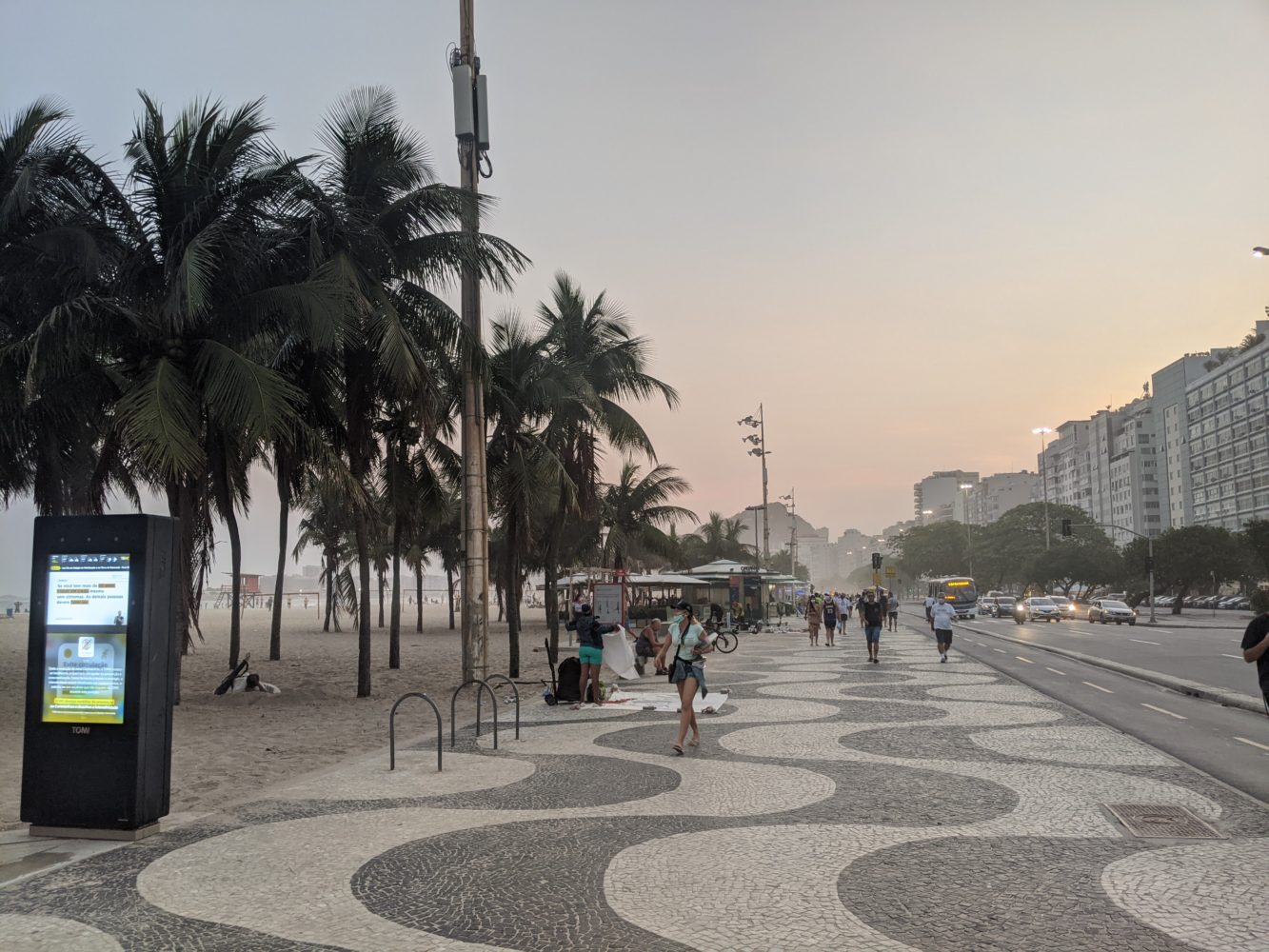
Ipanema
Ipanema is slightly more upscale than Copacabana, so I would imagine that hotels and Airbnbs here are just a bit more expensive. Both beaches have distinctive tiles running along their main waterfront walkways, so it’s easy to tell which beach you’re on just by looking at the sidewalk!
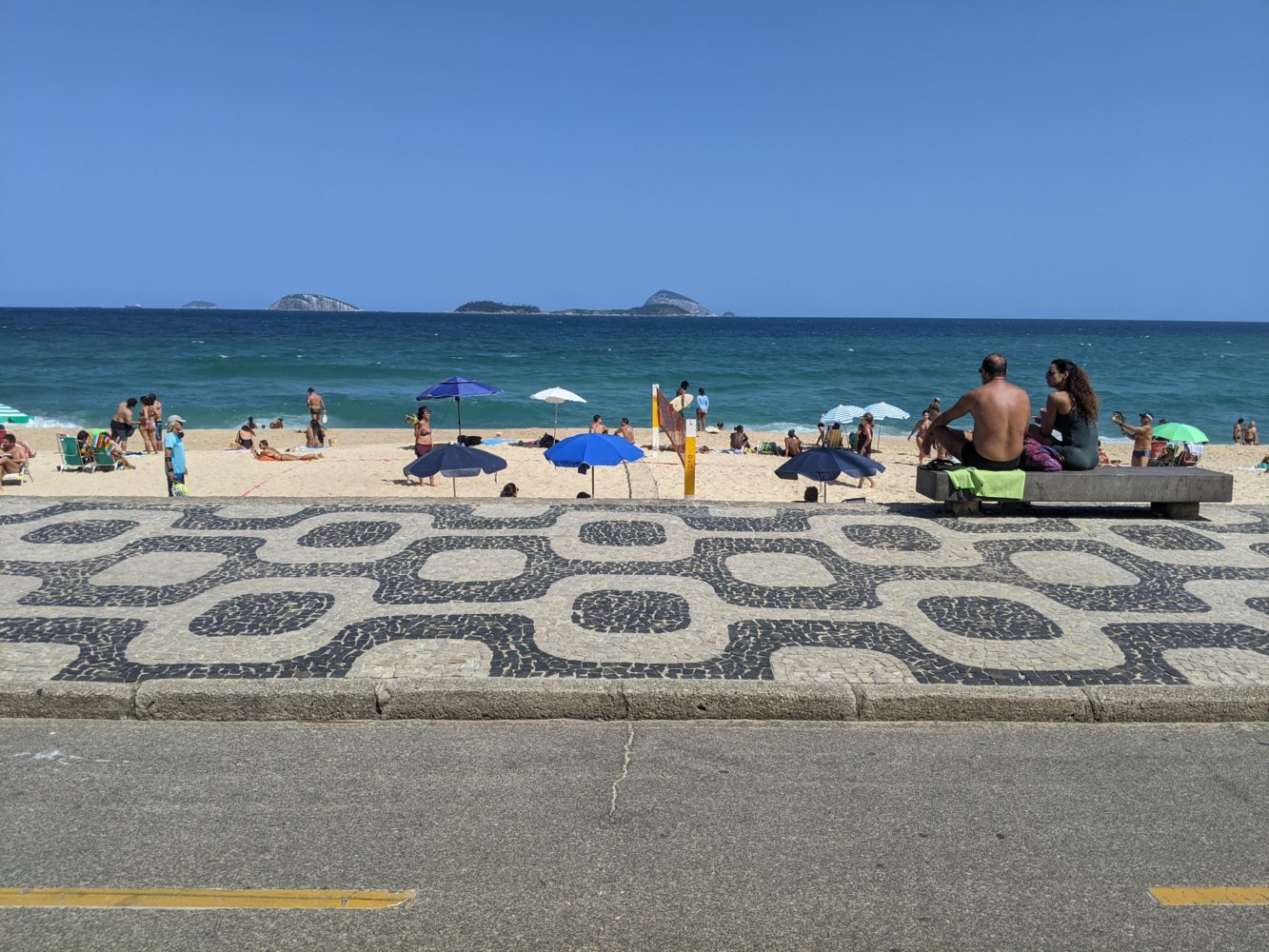
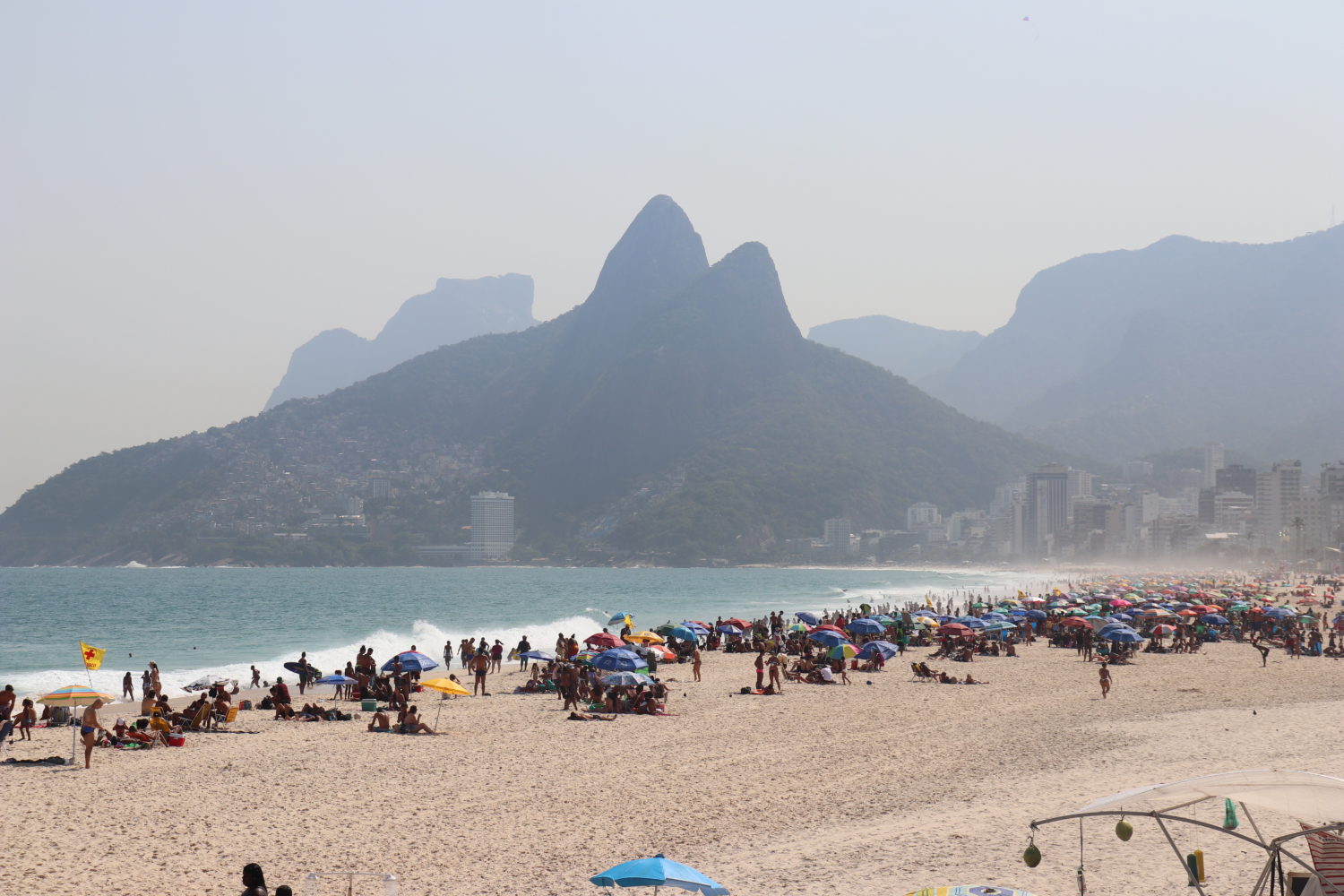
Where to Stay
Since I found my long-term rental in the Copacabana area, I can recommend it as an affordable place to stay. I’d suggest that most tourists choose lodging in Copacabana or Ipanema. Both beachfront neighborhoods feel very safe to me, including at night.
3. The North vs. South Divide
Copacabana and Ipanema are considered part of Rio’s “Zona Sul,” or South Zone. This is where most of the tourist attractions are located and where I recommend you stay if you’re planning a visit.
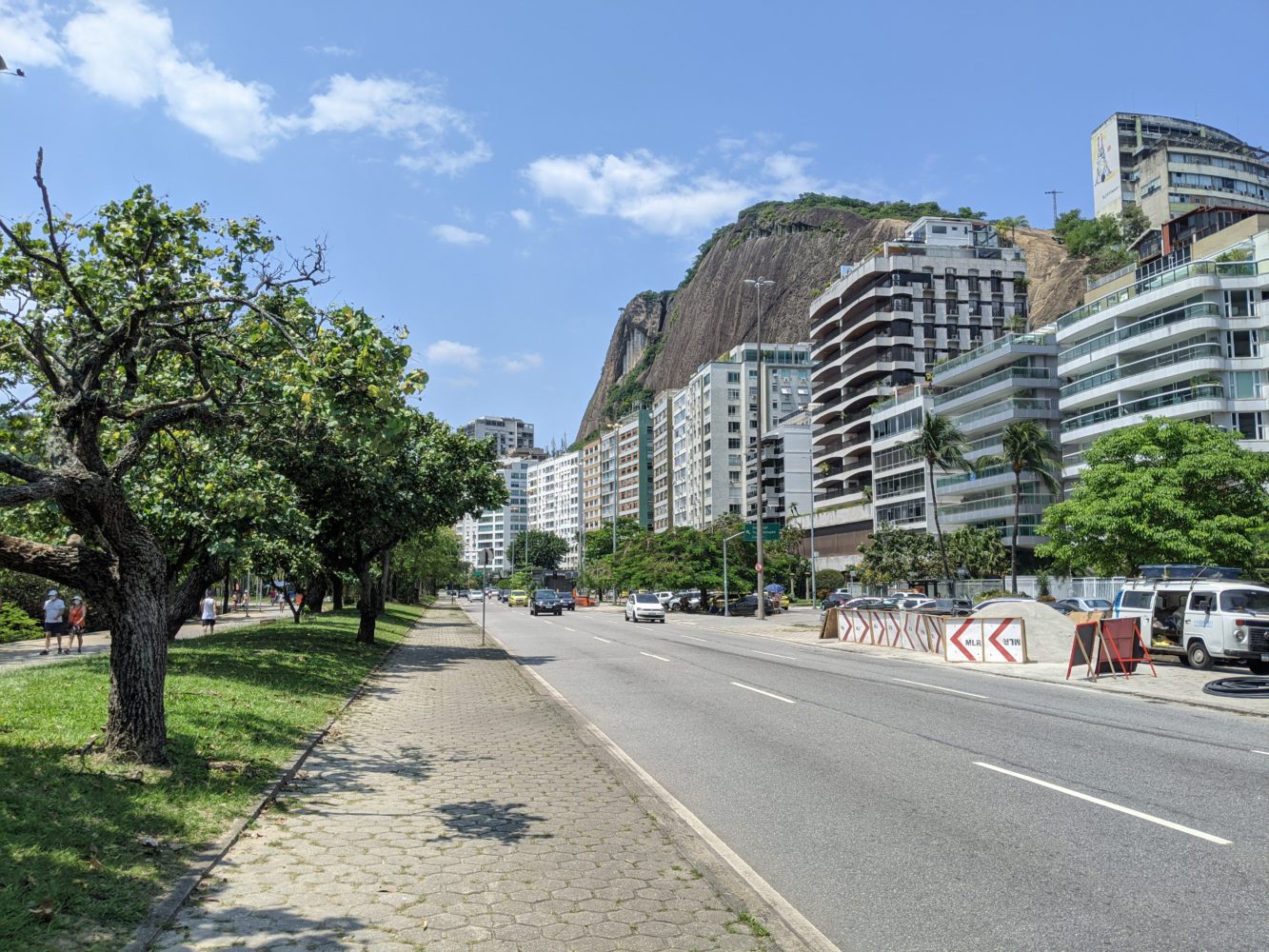
In contrast, the Zona Norte (North Zone) is considered to be a little bit less safe and definitely less touristy. Adventurous travelers who spend a bit of time in Centro (Downtown Rio) will find a stunning hub of colonial and gothic architecture. It’s a part of the city that has so many hidden treasures, but it is also admittedly pretty grungy and some of the buildings here seem to be in disrepair. I’m always extra careful about my personal belongings whenever I head up that way.
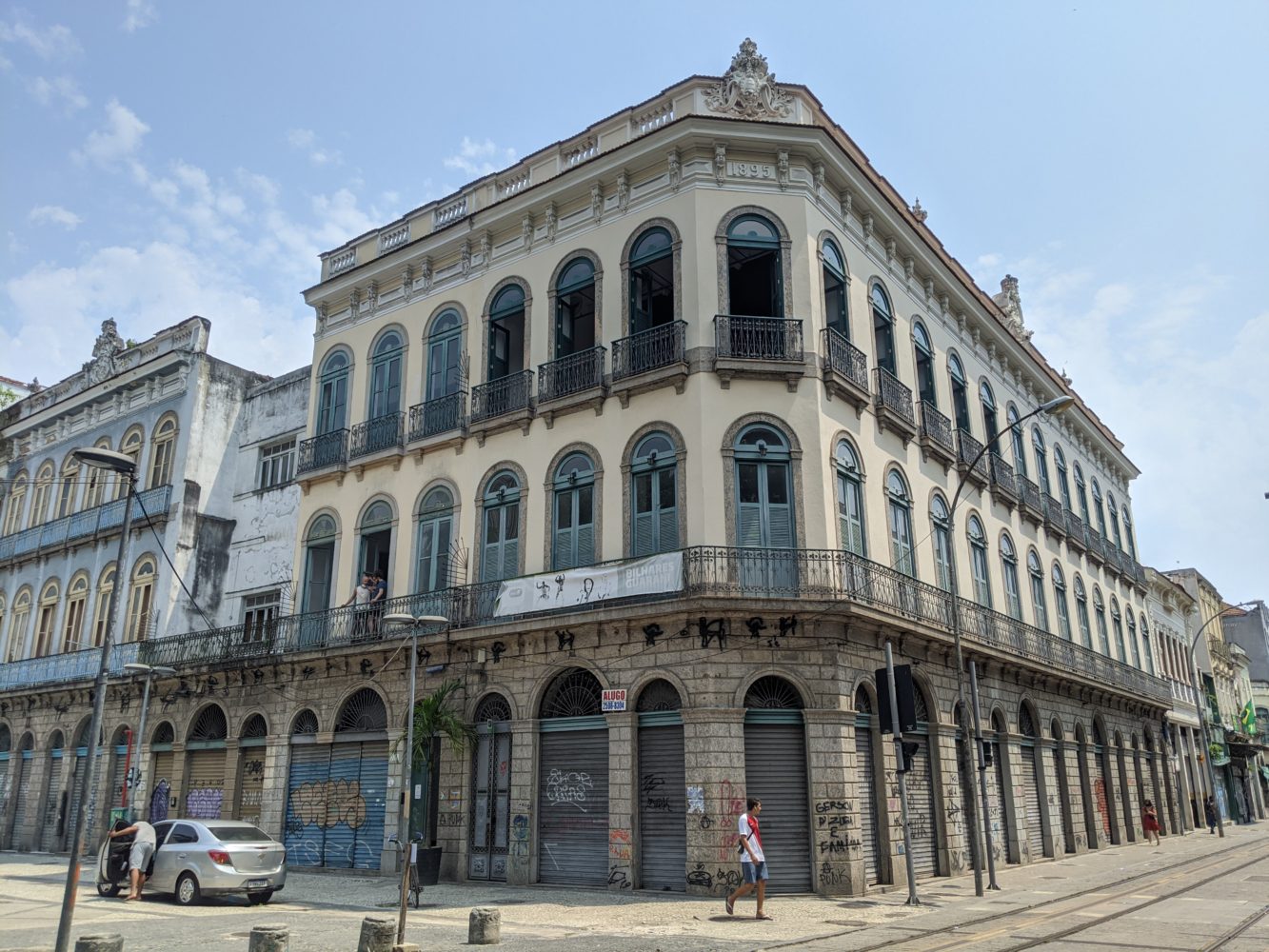
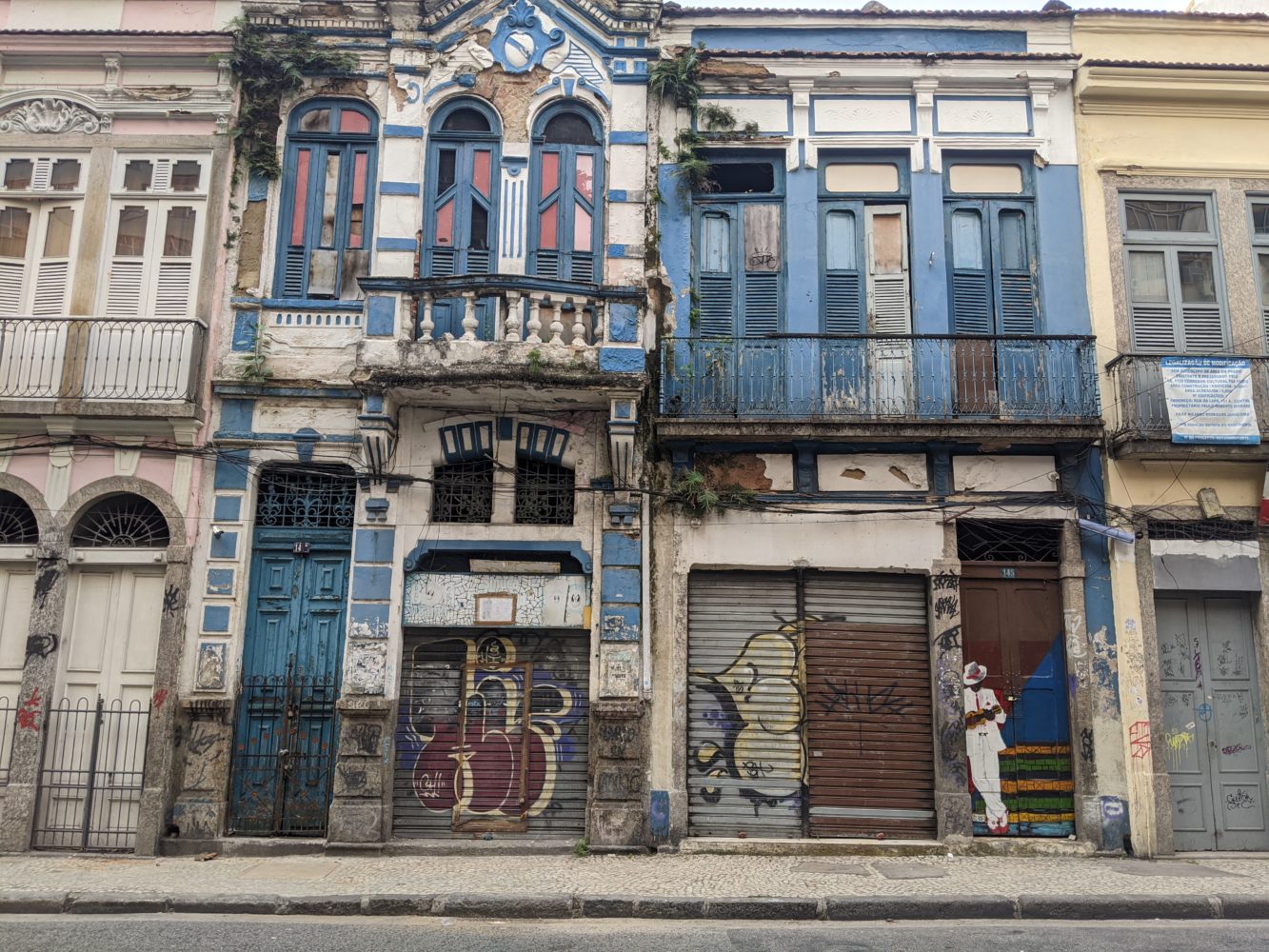
In future blog posts, I’ll discuss the Zona Norte in much more detail. I think travelers with a lot of experience blending in and not drawing attention to themselves would enjoy exploring Centro quite a bit.
4. Food
As a more international and cosmopolitan city than São Paulo, Rio’s food scene is admittedly a lot more vibrant in my opinion. Affordable Brazilian fare is easy to find everywhere. There are a lot of good international options, although you kind of have to go hunting for them. I’ll eventually write a blog post featuring some of my favorite restaurants in Rio.
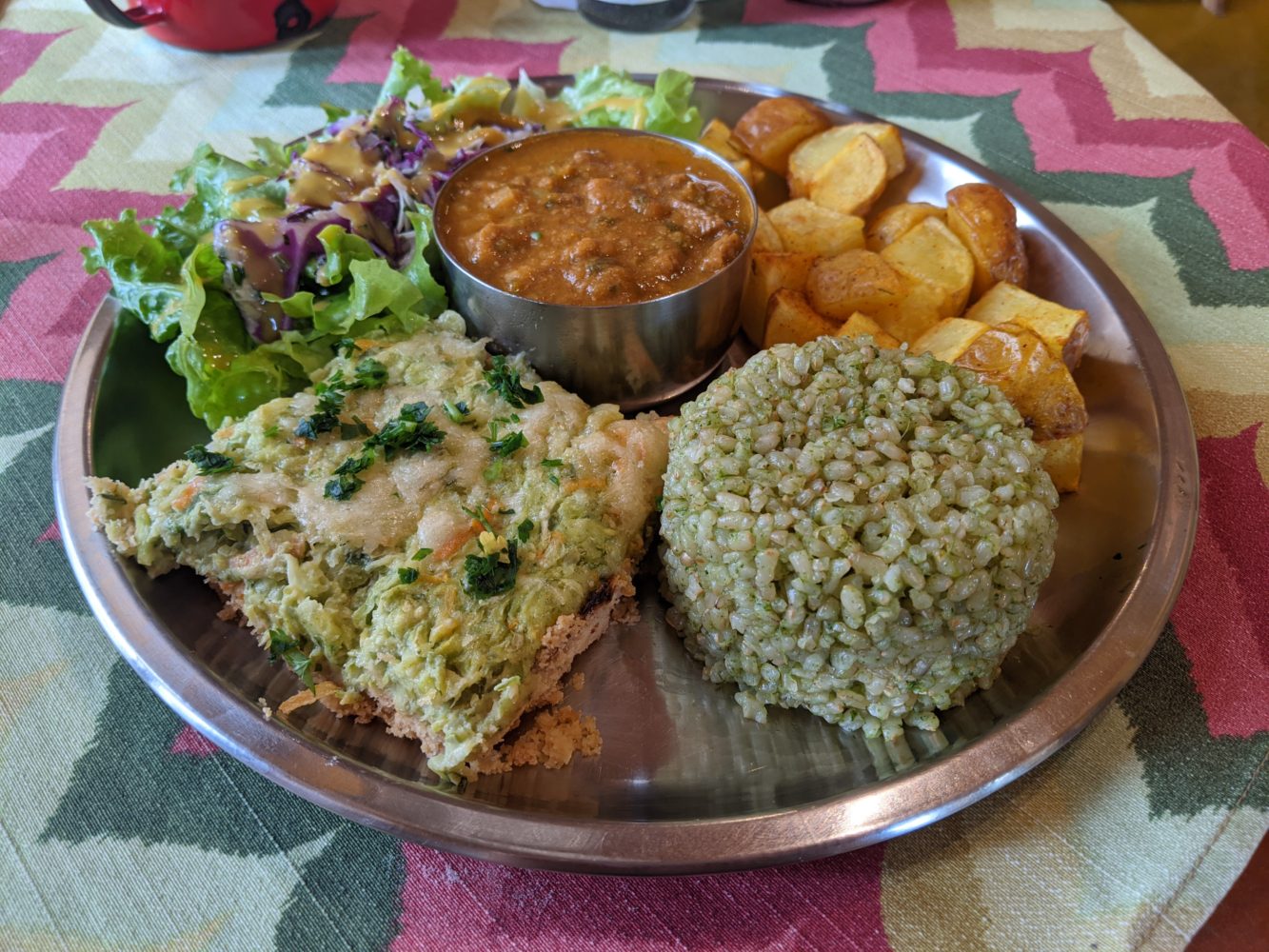
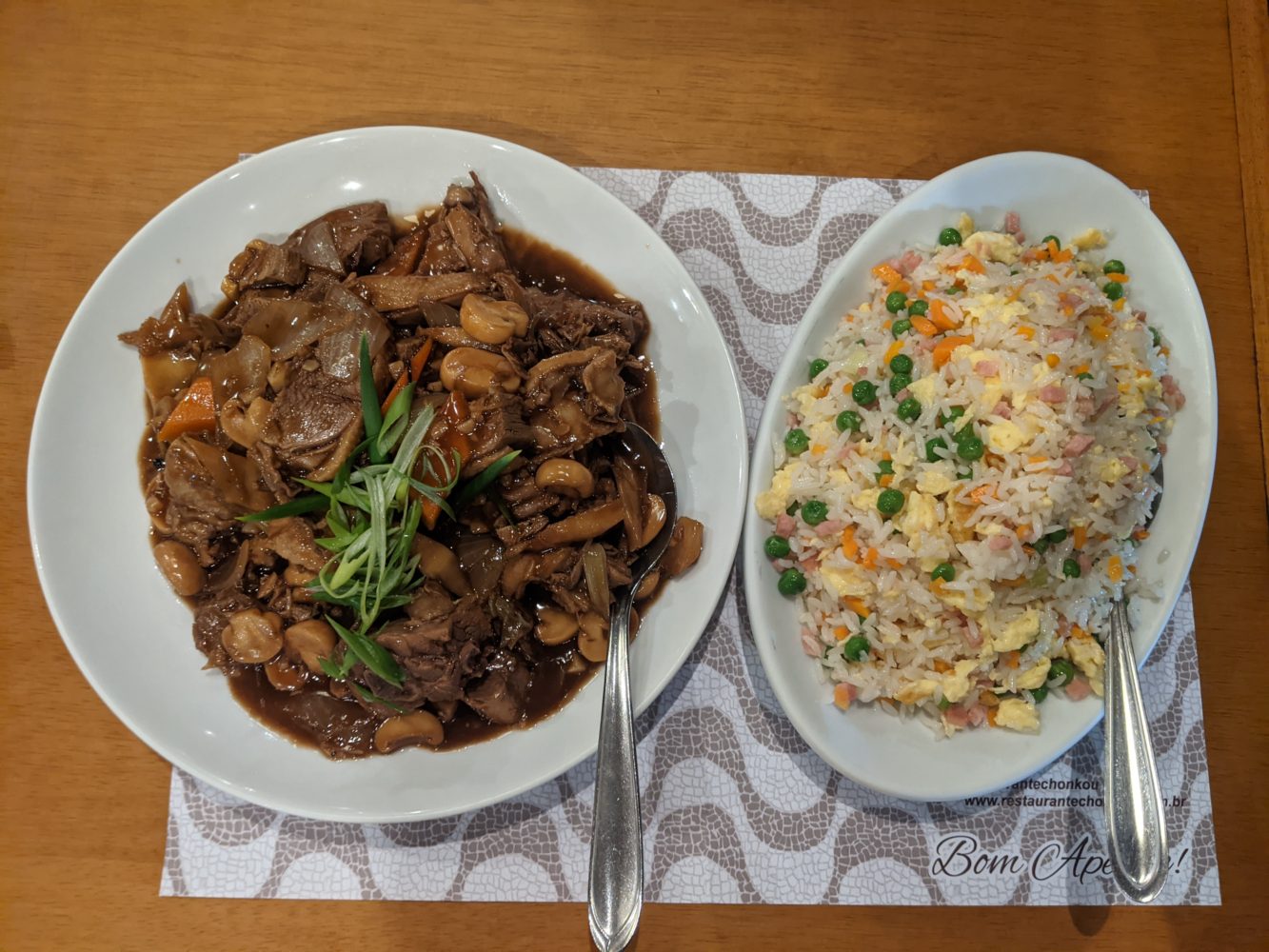
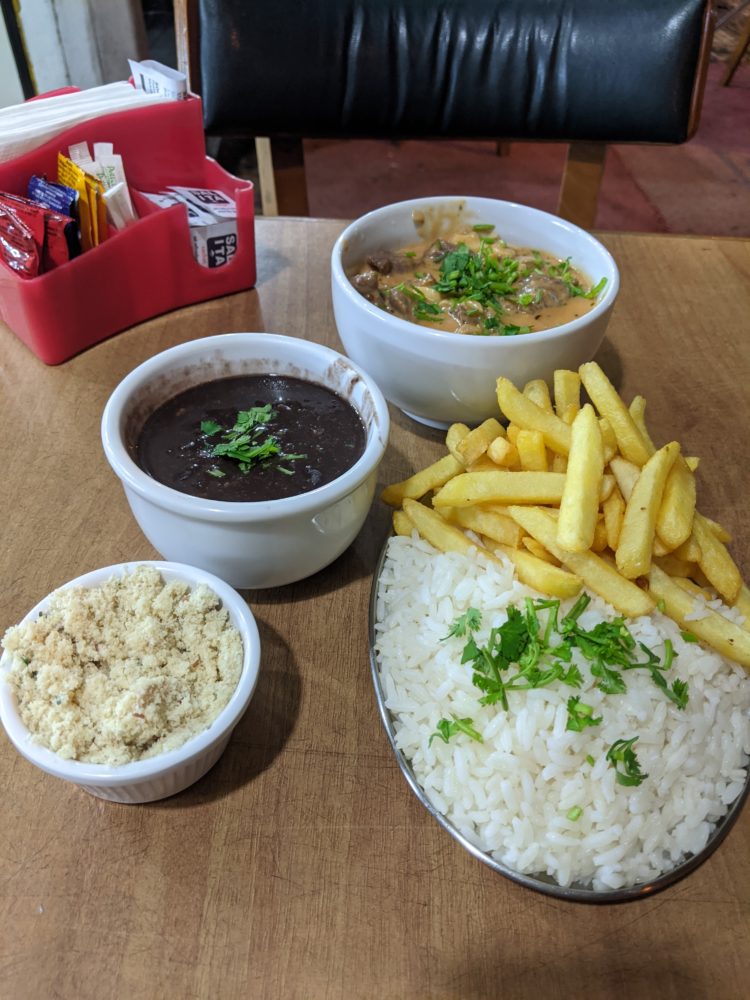
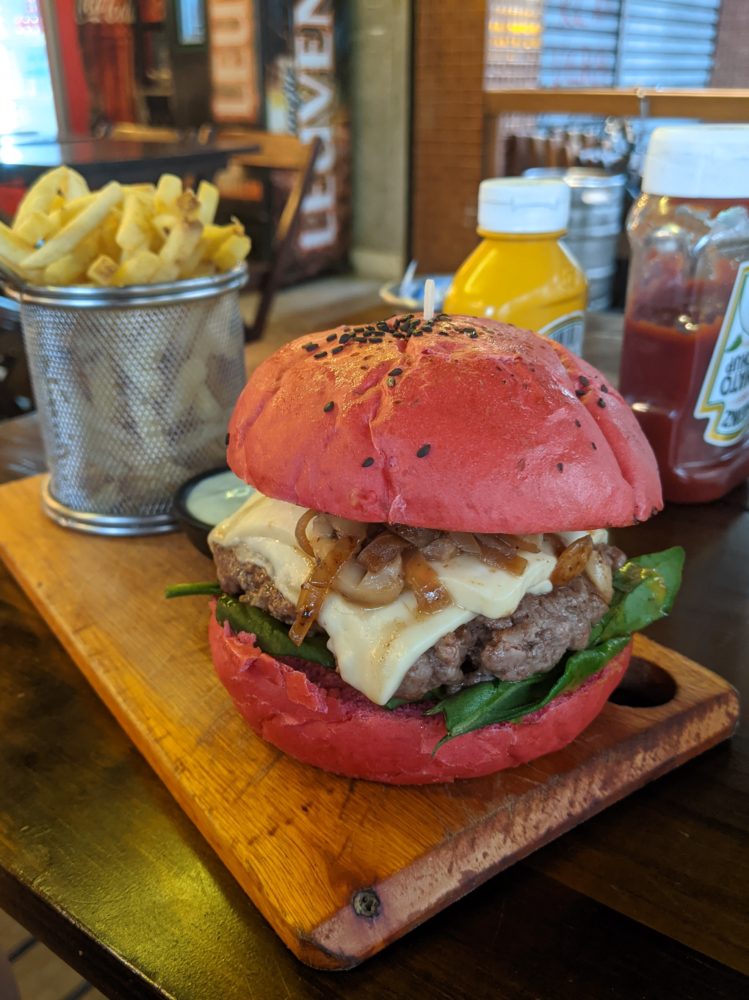
5. Safety
Alright, let’s get into safety. Here are the facts so far: I’ve lived in Rio for a month and I’ve never felt unsafe. In fact, during my nine months of living in Brazil, I’ve never come close to being the victim of a crime (as far as I’m aware).
My biggest piece of advice
I’m not saying this to minimize the crime that does occur here, nor am I claiming that Brazil is crime-free. However, I do think that if tourists take basic precautions, the risk of crime in Rio can be reduced to a level that shouldn’t prevent you from visiting. What do I recommend? In addition to using common sense, the biggest piece of advice I can give is to stay quiet if an area doesn’t feel super secure. By this, I mean: speaking English loudly is going to attract a lot of unwanted attention, especially in more local areas.
As a long-term solo traveler here, this inherently isn’t much of an issue for me. Sure, if I order food in a restaurant or buy something at a store, my American accent will reveal immediately that I’m not from Brazil. But in general, strangers on the street have no idea that I’m not a local. That’s because Brazil is as diverse as the United States: no ethnicity, skin color, or any other physical feature will automatically reveal to people that you’re a foreigner.
In the same vein, don’t respond to people who approach you on the street, regardless of what they want to sell or request of you. A shake of the head without a word to signal “no thank you” is the safest option. It’s possible that you will be approached by beggars in Brazil, but I’ve never seen any of them resort to belligerence or harassment.
Favelas
You’ve probably heard about favelas, a term that refers to slums or poorer areas in Brazil’s big cities. I remember someone complaining to me that in Rio, you have to be careful of accidentally wandering into favelas, and it can be hard to tell where they are. In my experience, that’s just not true. Favelas are pretty distinct from other neighborhoods, and you would almost never wander into one by accident.
Unlike in the US, poorer communities are usually located higher up on hills and mountains; richer areas tend to be either in the valleys or along the water. Favelas also have a very distinct style of architecture, with cube-shaped houses made of bricks, which stand in stark contrast to the high-rise condos you’d see elsewhere. If you find yourself walking up a steep hill and notice this change in your surroundings, you might want to turn back around.
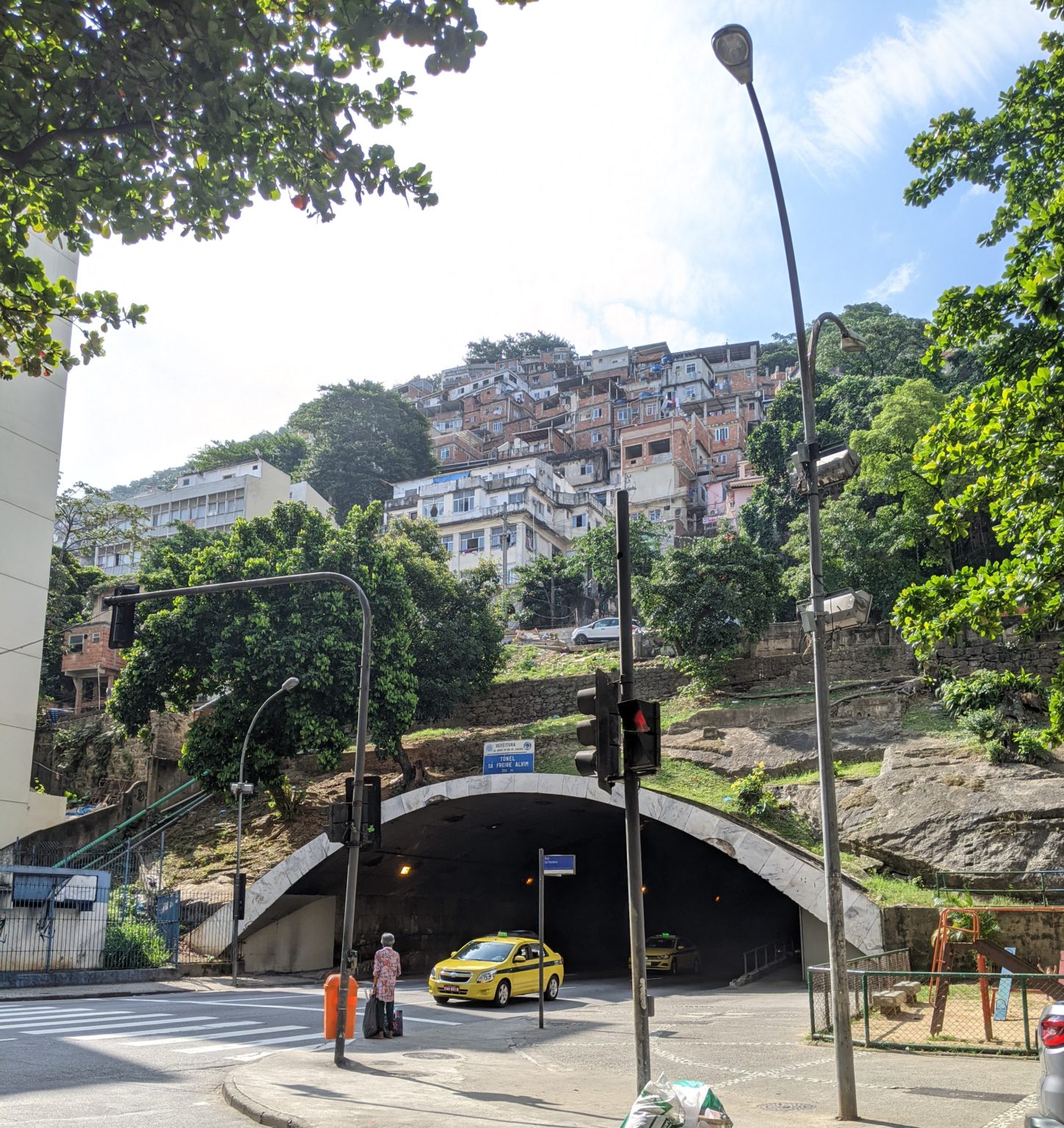
Some tourists to Rio go on favela tours. Because of COVID-19, many such tours are not operating right now, but even if they were, I’ve been advised by my landlord against going on them. Although I think it would be interesting to see a favela in a slightly safer way than wandering in on my own, I’ve been warned that no tour is completely safe. I also just don’t feel too comfortable with the idea of commodifying poverty and turning it into a spectacle, although I fully understand that this debate has two sides.
Why does Brazil, and Rio in particular, have such a bad reputation?
I have thought a lot about this question because there is such a discrepancy between my experiences on the ground compared to the warnings that so many travelers and even Brazilians have given me. There are a number of different factors at play here, but I think it boils down to a couple things:
- Many foreign tourists probably don’t take basic safety precautions. They might make themselves easy targets of crime, broadcasting that they’re not local by speaking English (or Spanish, or any other language) loudly with their families or travel buddies.
- Things have probably improved quite a bit in terms of safety and security over the years.
- Brazilians would rather have tourists be cautious and safe than careless and in danger.
- Brazilian media
I’ve already touched on the first few points, so let’s end this section by talking about the last one. From what I’ve seen, Brazilian media loves to cover crime and violence. This is especially true of the evening news, which tends to focus on the most shocking and/or violent local and domestic crimes that have taken place during the day. I would assume that shock value translates to higher ratings and higher advertising profits, but I question what effects this has on public perceptions of safety.
This is just my own theory as an expat, but I think that perhaps some locals internalize this constant stream of violence and assume that their country is dangerous or lawless, even if they don’t actually experience that in their own day-to-day lives. Many of the people who’ve warned me that Brazil, São Paulo, or Rio aren’t safe are people who’ve lived here their whole lives. I’m not saying that your trip to Brazil is 100% guaranteed to be problem-free, but I would encourage you to seek a number of opinions before you decide that Rio is too dangerous to visit.
6. Weather
I arrived to Rio in September and it’s currently October at the time of writing, which is spring in the Southern Hemisphere. It sure is disorienting seeing friends and family in the US post pictures of fall colors and pumpkin patches online while the weather here continues to get warmer! In general, this part of Brazil (the states of Rio de Janeiro and São Paulo) is comfortable all year round.
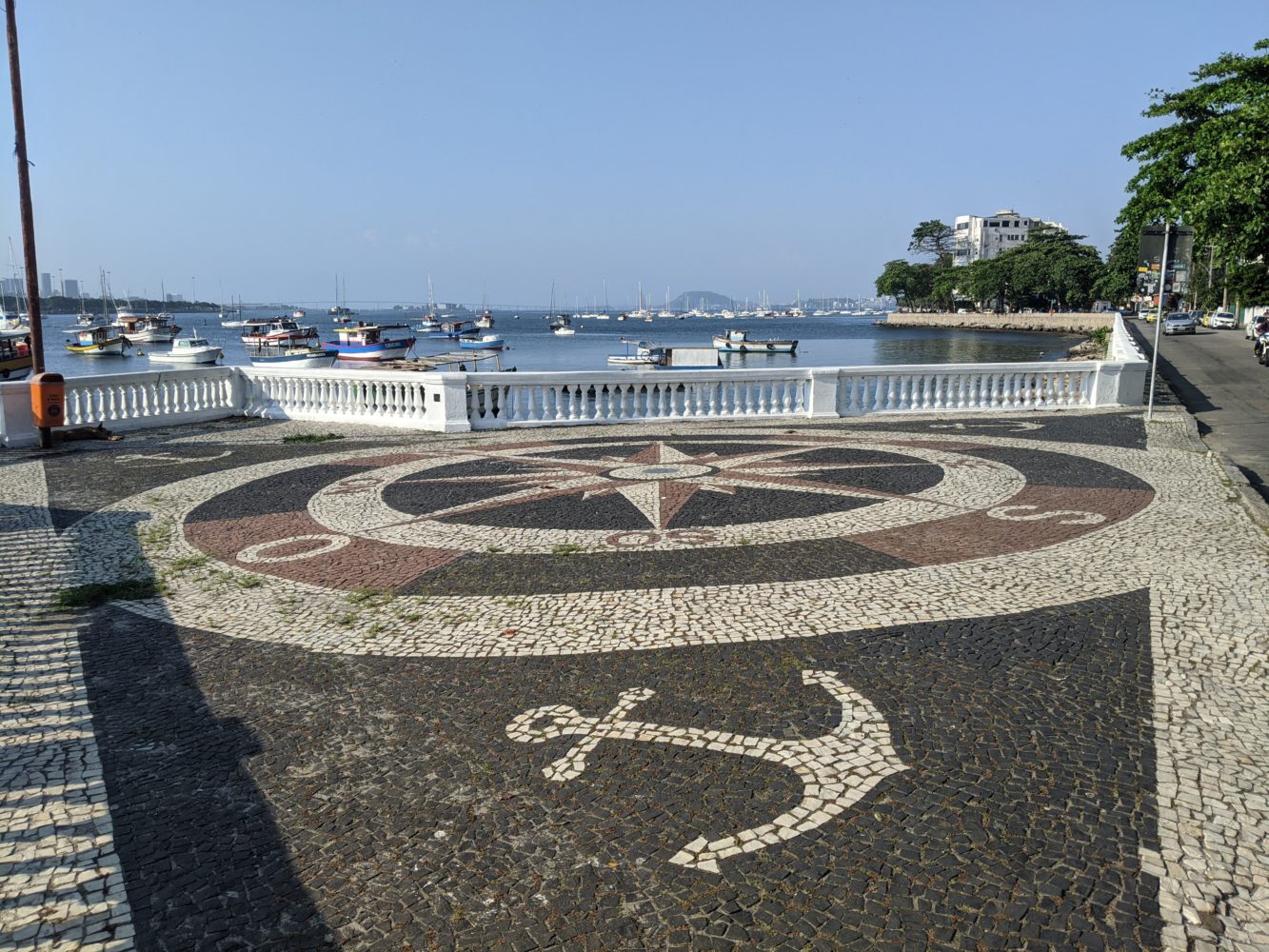
There have been some cloudy and rainy days in Rio, but most days have had been at least partly sunny. I’ve heard that November and December get a lot hotter and the chance of cloudy weather will continue to go down as we near the end of the year. Most days offer perfect beach weather.
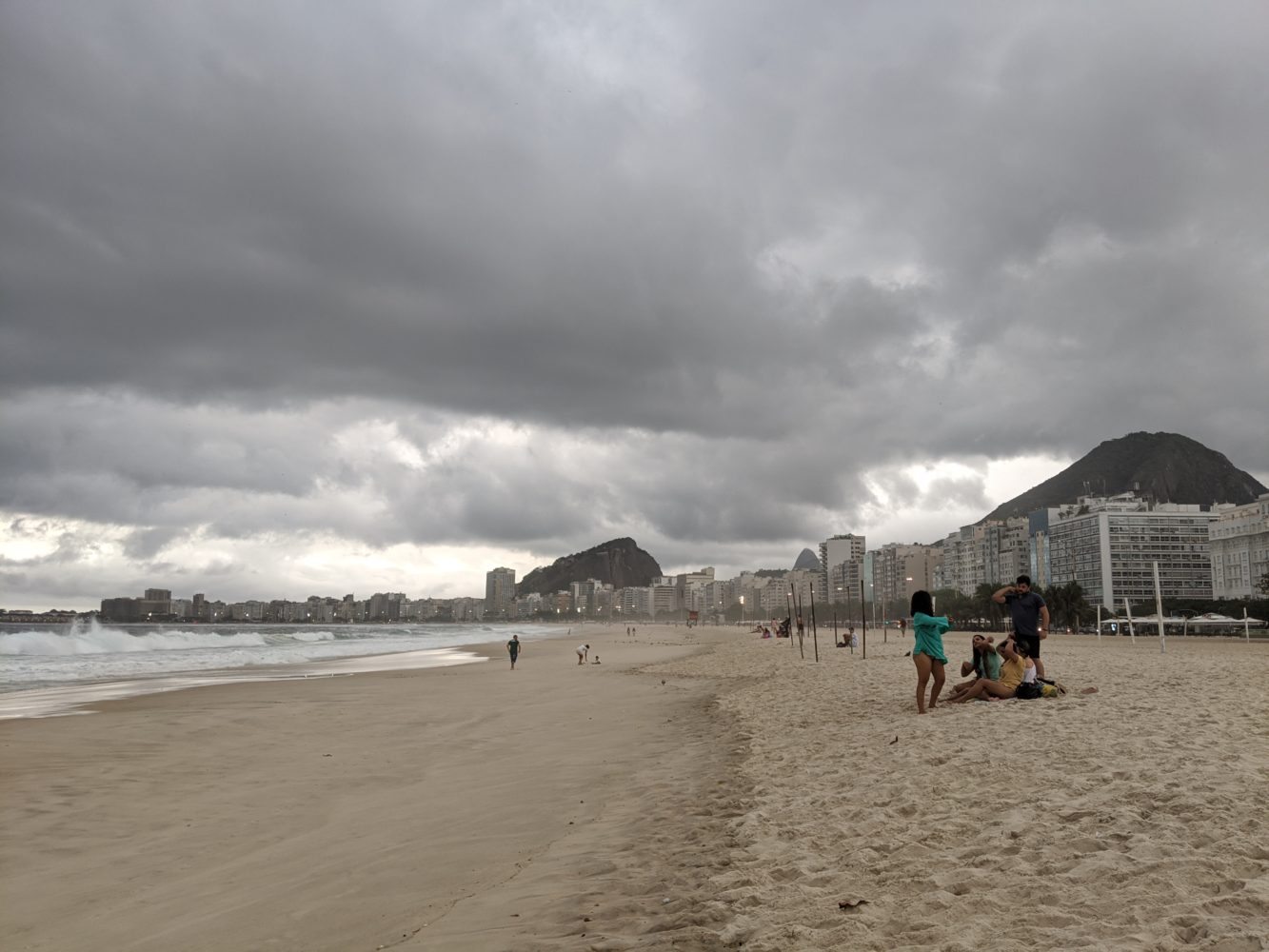
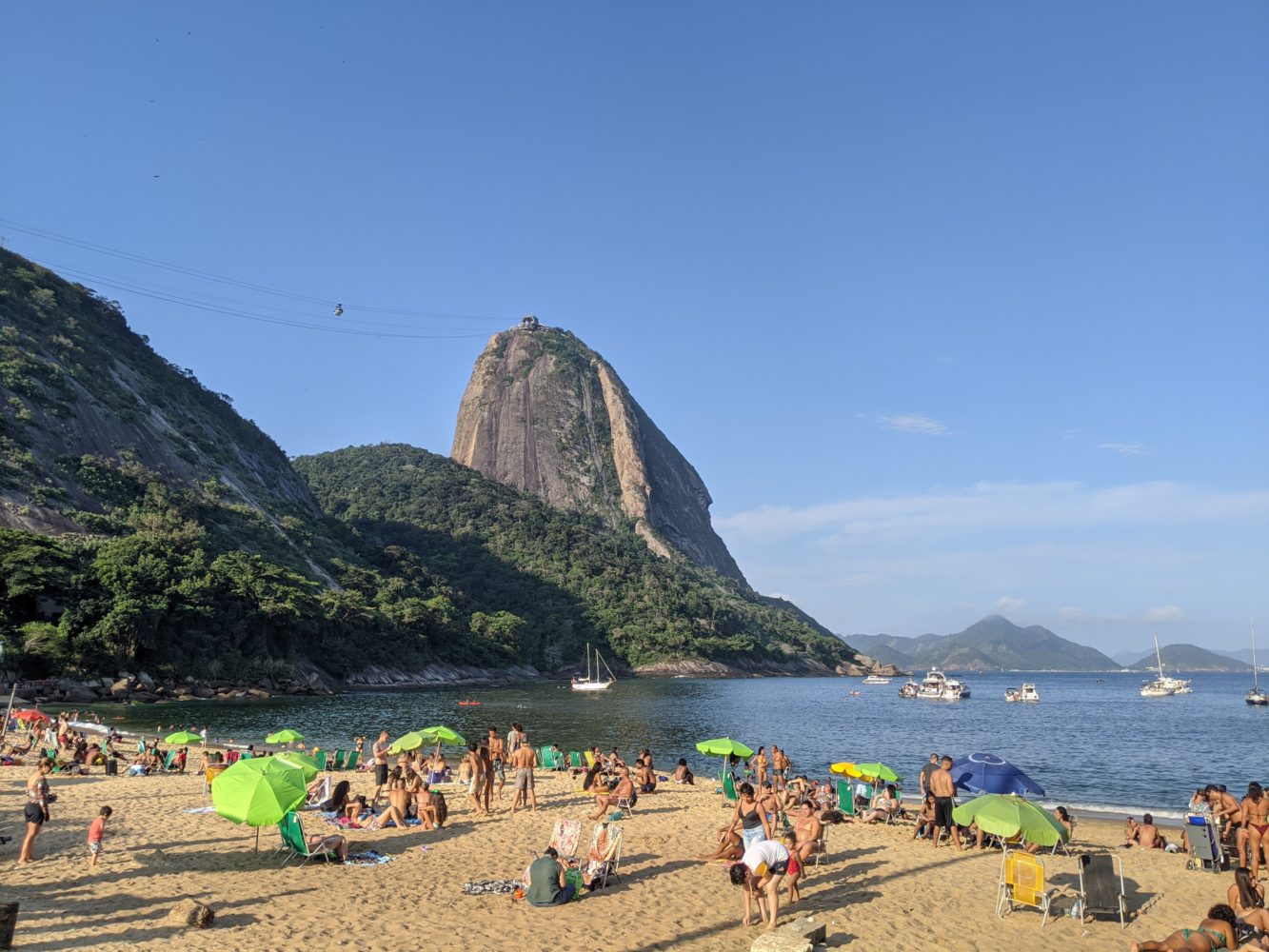
7. Transportation
Rio has all your typical transportation options, including Uber, city buses, and more. By far the easiest method to get around is the city’s metro system. It’s clean, safe, easy to use, and easy to understand. I highly recommend it as an economical and straightforward way to travel throughout the South Zone and beyond.
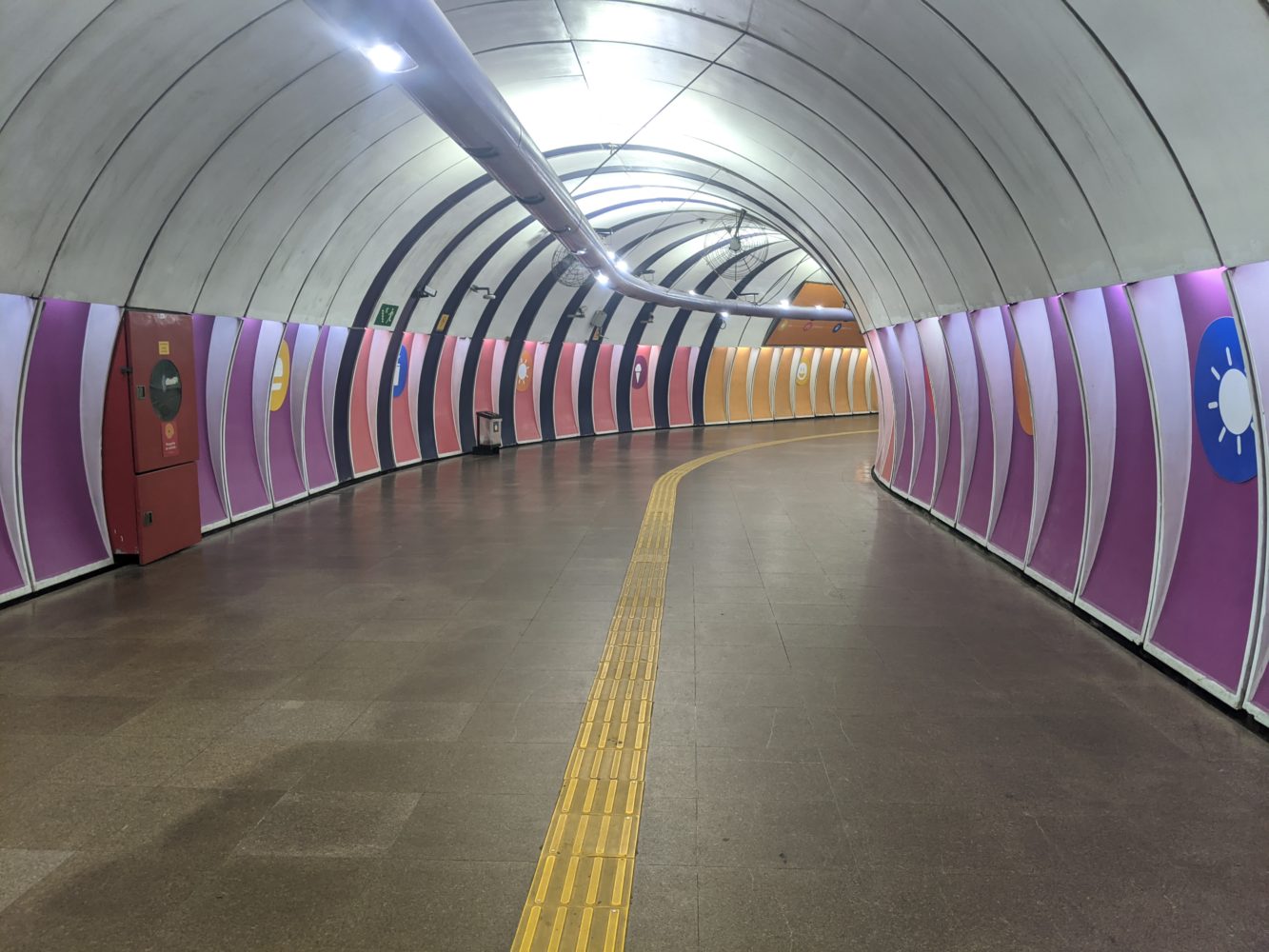
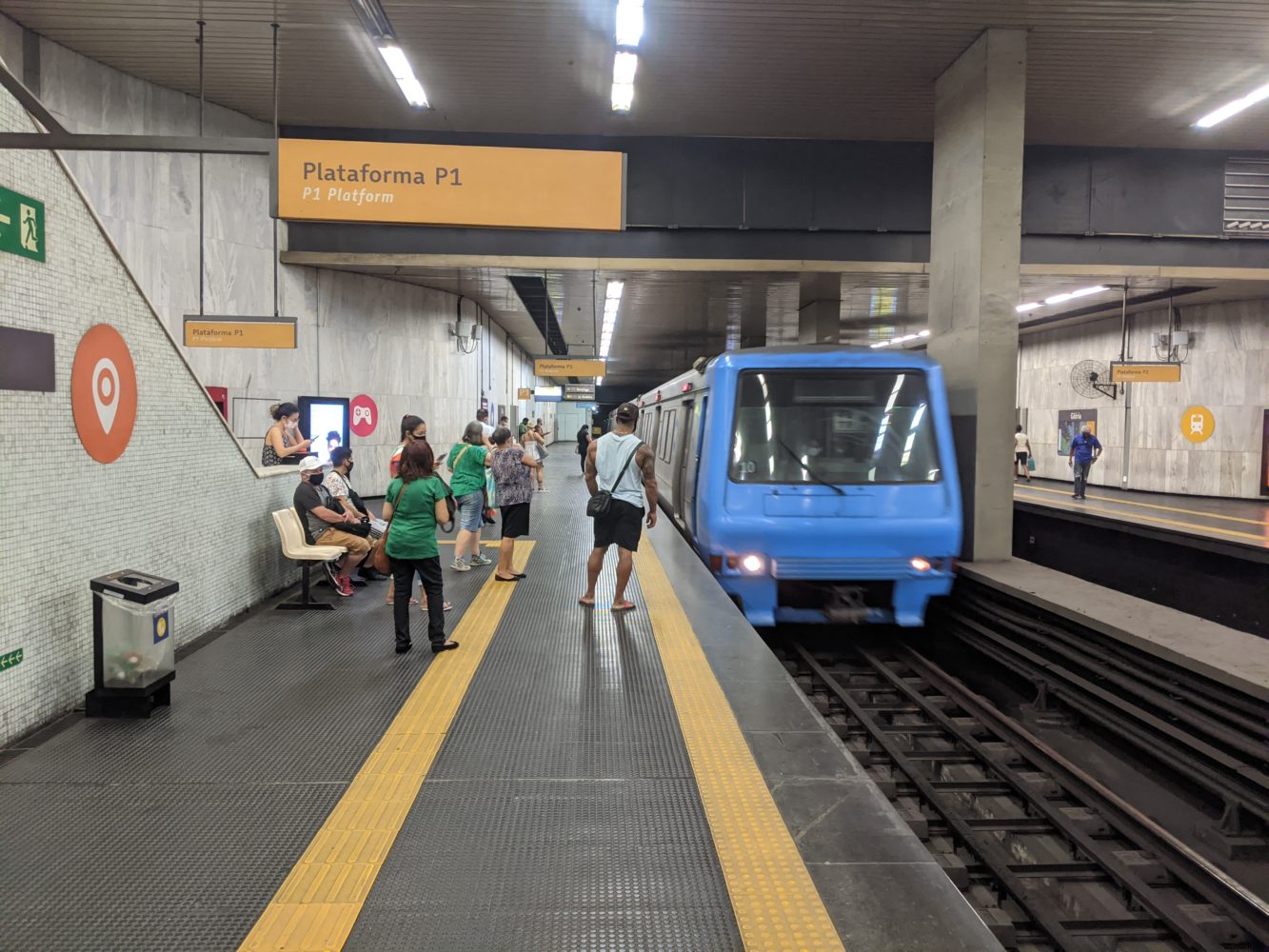
8. Neighborhoods
I’ve already mentioned Copacabana and Ipanema above, but Rio de Janeiro has a lot of interesting and safe neighborhoods to explore. I particularly like Lagoa and Urca, two centrally located areas that feel sort of suburban. I’ll write about both of those and more in future blog posts. Read on to learn a bit more about what else you can expect from the blog in the next few months!
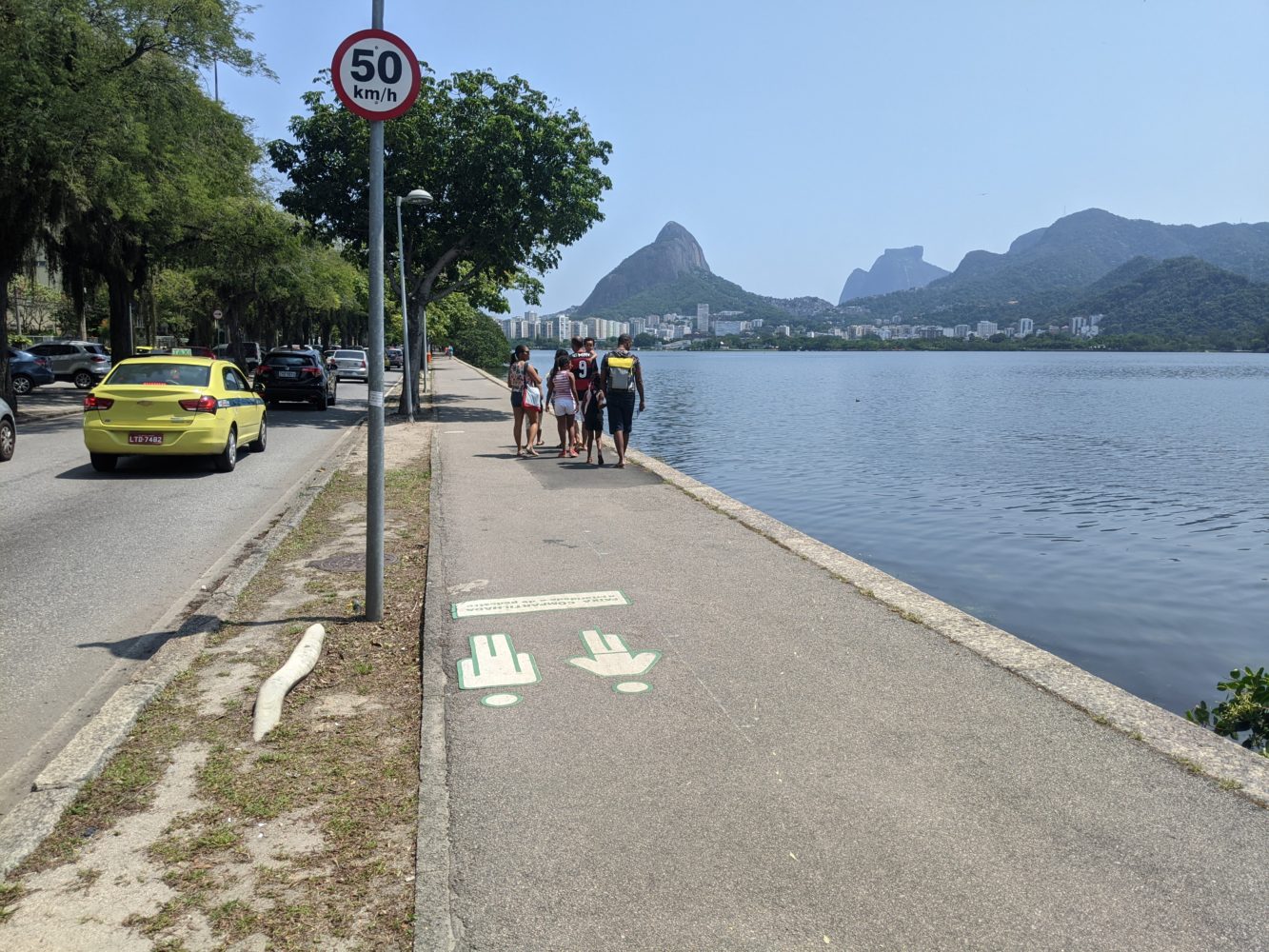
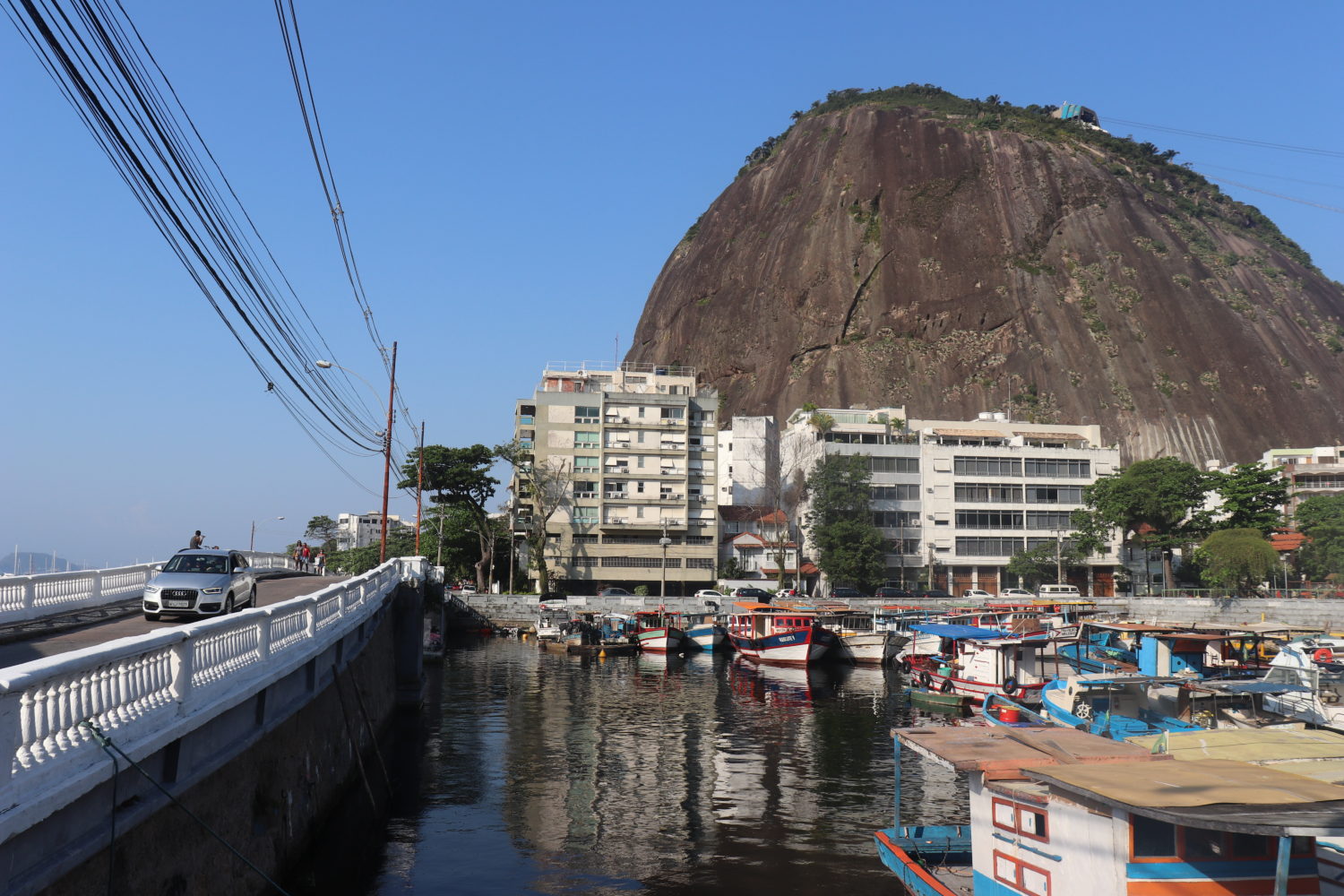
What's Next for the Blog
Back in January before COVID-19 arrived in Brazil, my plan for 2020 was to spend six months in São Paulo and then to return to the US in July. As I’m sure is the case with many of you, things changed course once lockdowns started. I’m now looking at staying in Brazil until mid-2021, and assuming that cases here continue on a downward trend, I’m planning on traveling up the coast after New Year.
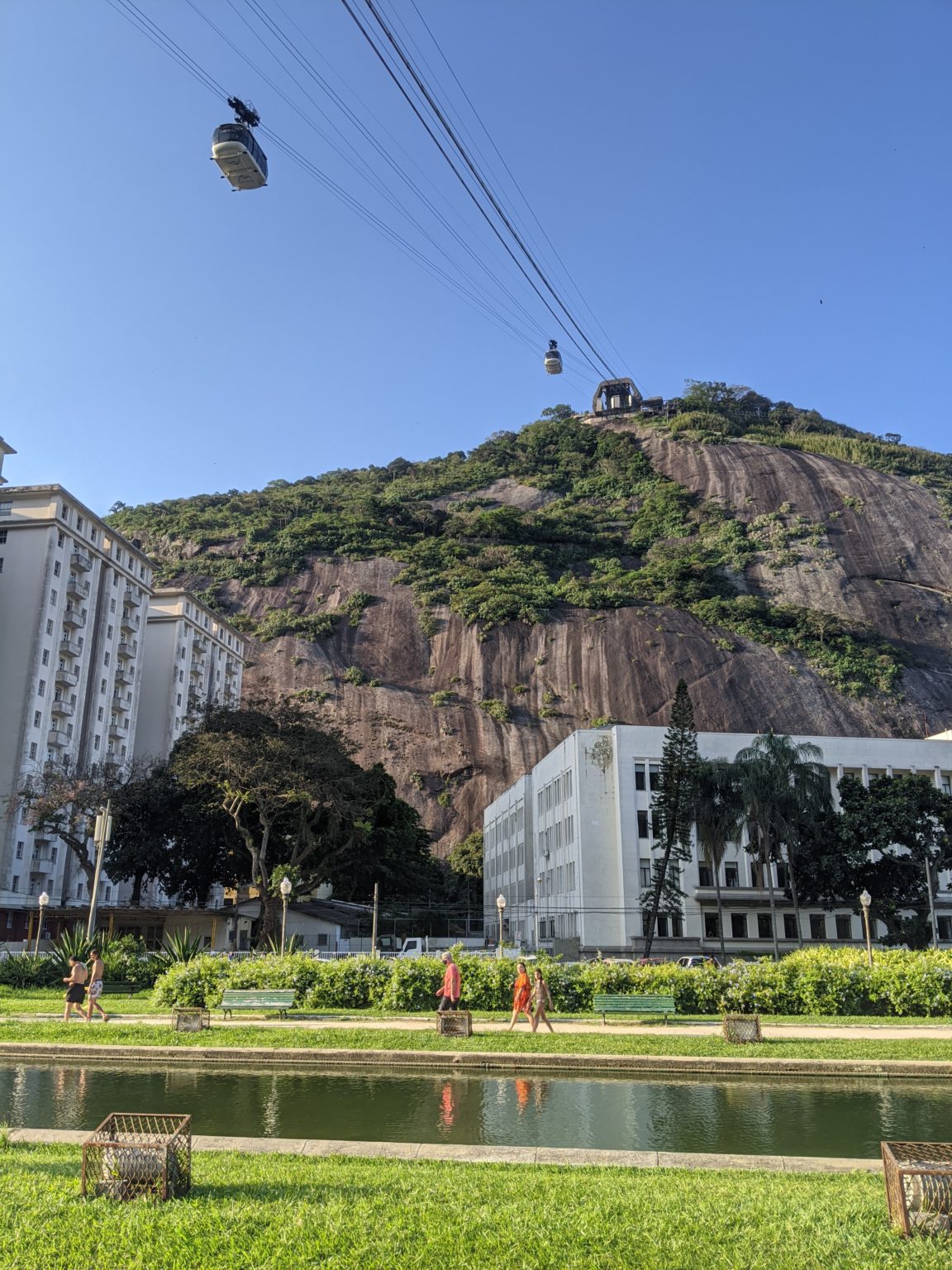
In the early part of the year, I introduced a short-lived project called São Paulo 360, which aimed to highlight some of the city’s best neighborhoods. Although I got a couple of blog posts written, São Paulo 360 was cut short in mid-March. I wrote about some of the city’s most iconic areas, but I would’ve loved for the project to have a dozen or more posts. Oh well.
Now that Brazil is recovering from its epidemic and most businesses have reopened, I’ve decided to pick up where I left off and start Rio de Janeiro 360! I’m so excited for this complementary project because I honestly believe Rio deserves some good publicity, especially now. Unlike my previous series, this one will not necessarily be limited to neighborhoods but will likely include posts on how to visit some of Rio’s most famous attractions, tips on how to stay safe, and more. I’m also going to aim to publish a new post about once a week, so I’m really hopeful about compiling one of the most comprehensive guides on the internet about this stunningly beautiful destination!
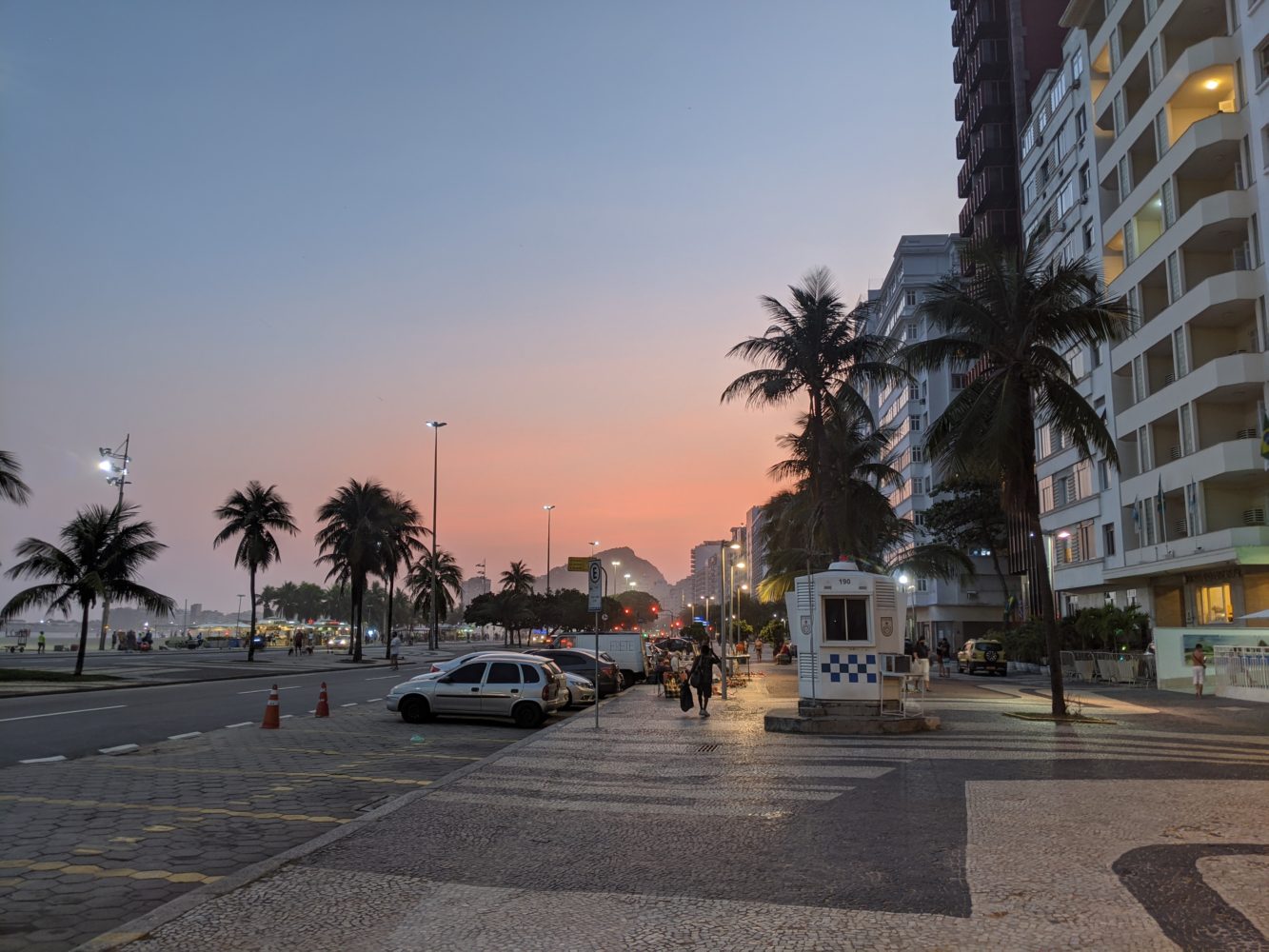
Have you ever been to Rio de Janeiro? If you have, what were your experiences? If you haven’t, did this post convince you to consider it more seriously once international borders safely reopen? Let me know in the comments below! And if you have any questions I didn’t answer, feel free to ask those down there, too! Thanks for reading, and keep an eye out for the next post coming very soon!
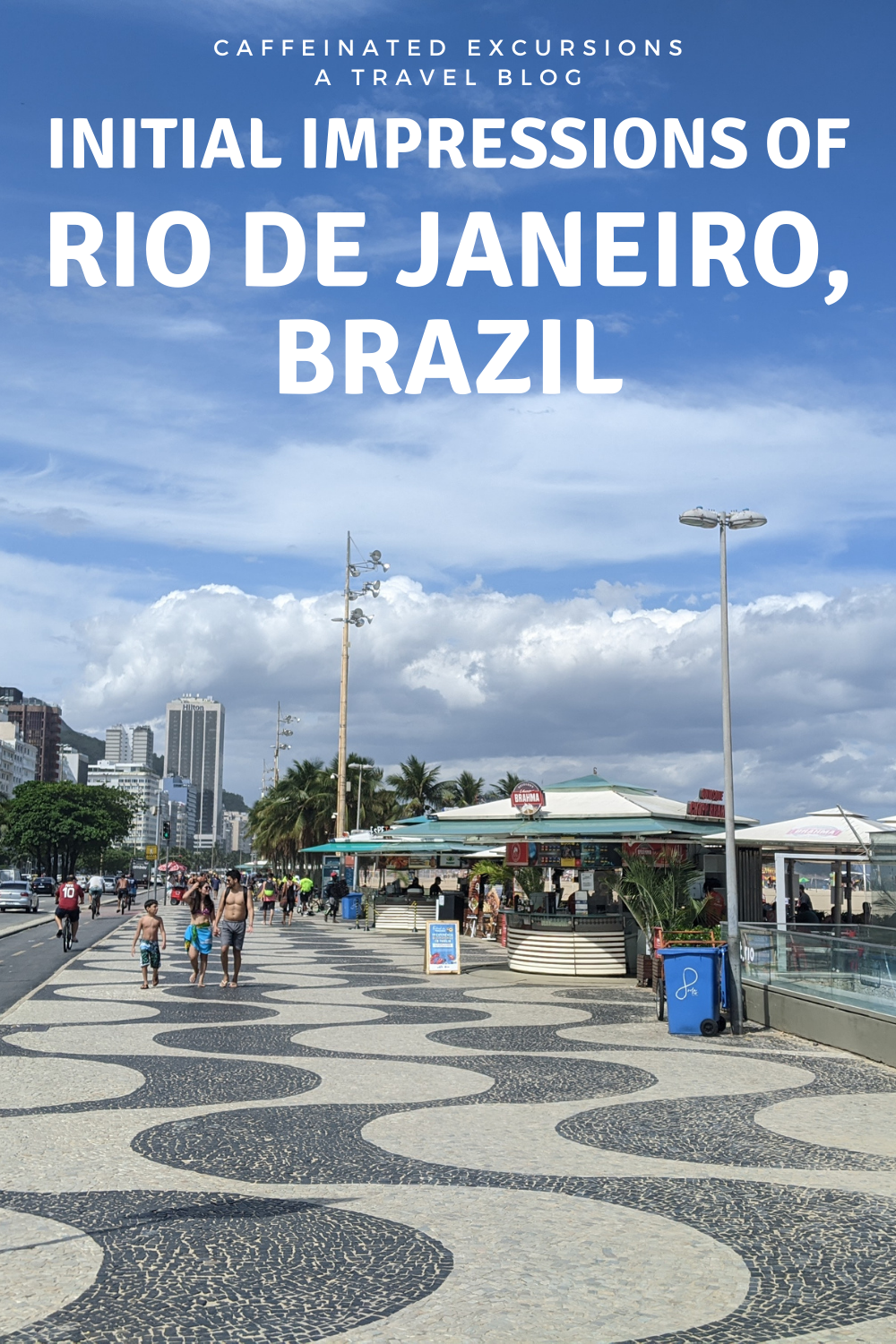
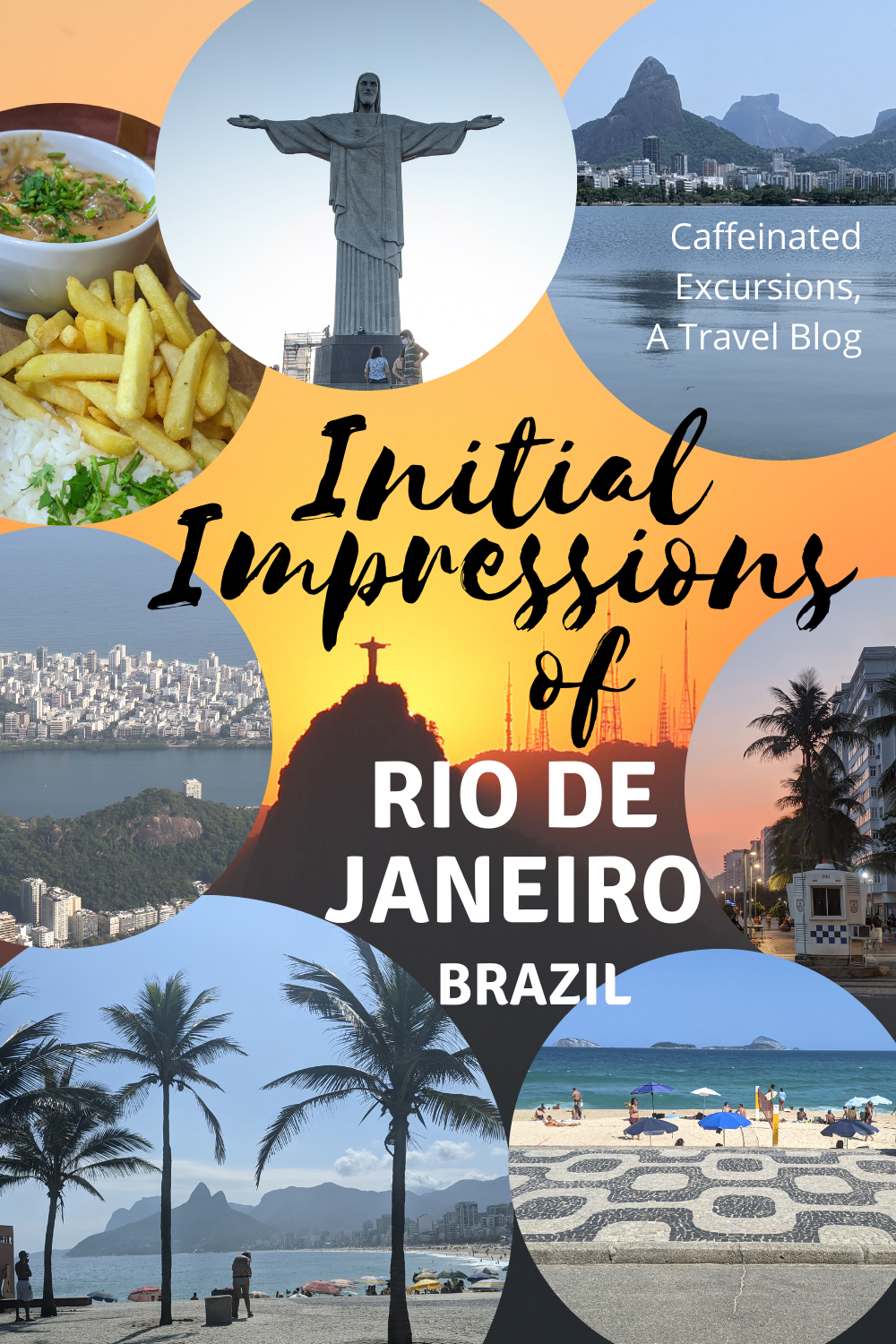
This post was published on Oct 22, 2020
Recent Posts
- Amtrak Borealis Review: Round Trip From Chicago To Minneapolis St. Paul
- Why You Shouldn’t Miss Devonport On Your Next Trip To Auckland
- 2024 End-Of-Year Summary & Sneak Peek 2025
- Get To Know The Washington, D.C. Metro Area: Neighborhoods And Food Scenes
- The Best Places To Eat, Drink, And Caffeinate In Portland, Maine
Meet Your Caffeinated Blogger: Kevin!

Hi, I’m Kevin! I’m a coffee addict from Seattle, and my life revolves around traveling! Caffeinated Excursions is a record of my trips over the past seven years. Since I started blogging, I’ve lived in Mexico, Vietnam, and Brazil. Chicago is my home base (although I’m planning on moving abroad again later this year). Thanks for checking out my blog!
Where I Am Now 📍
Categories
Upcoming Trips
- Montreal, Canada (July)
- Taipei, Taiwan (Nov)
- Brisbane, Australia (Nov)


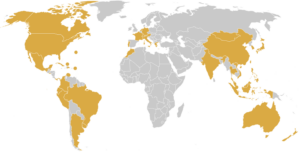
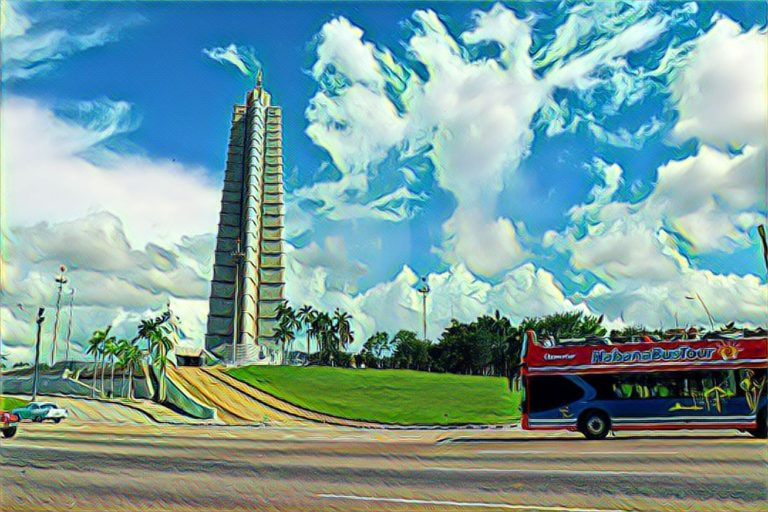
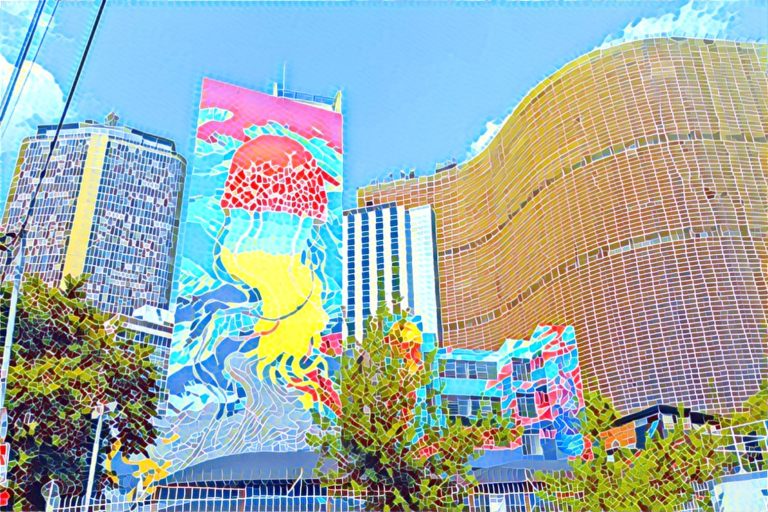
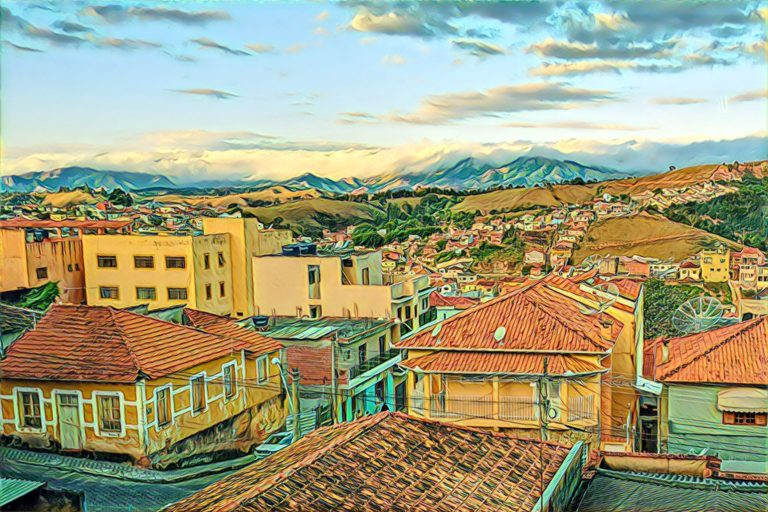
This is a very interesting post. I definitely have heard about Rio being rough. Do you know why the barrios are higher? That is so different from what normally occurs with desires for views. Or are the views of these areas blocked by the richer high rises and they are hard to get to?
Looks super stunning! I’m so happy you covered safety. I’ve always heard that Brazil (especially Rio) had super high and intense crime rates, people have always spread horror stories. It’s nice to hear I could go there and feel safe to enjoy all this beauty!
I love this article. Your safety tips are really good, I had no idea that Brazil was so diverse! The pictures you captured are beautiful – also WHAT IS that amazing burger bun?!
Just looking at your pictures should prove to anyone that Rio is a clean and beautiful city! I never believed much of the hype of people worried about crime in most cities unless their was a big drug culture or military presence. So for Rio, it seems like any other big city. You should never be afraid but always be cautious!
For me, the food and nightlife would be a definite highlight but hands down its the famous beaches of Copacabana and Ipanema! Those beaches look amazing and to have the mountains in the backdrop make it a perfect adventure for my bucket list project!
I am just blown away by the scenery in Rio! (ehem and the food!) Those mountains are gorgeous – I have never seen a city quite like this!
Fab post (as always) Kevin!!
Ah you’re really sparking my wanderlust with this one, I’ve always really wanted to visit Brazil!
Great post Kevin, look forward to hearing more about the food 😉
What’s that pinkish bun you had for the burger?
Thank you for your post. I am planning a trip to Brazil in the next 2 years and I was wondering about the safety situation in Rio too. From my own travels, I have learned that places around the globe are typically much safer then what is reported in the media. What really threw me off was one report during the Olympics where the GPS led a couple to drive through one of the favelas where their car was stopped and I believe they were killed. I knew that favelas are typically up on the hills and look very distinct, so I was wondering how something like this can happen.
One more thing: I love the 4 photos of the food. What is the photo on the lower right hand side?
It’s funny, all of the bad stuff I’ve heard about Brazil has also been from Brazilians. It’s pretty much the same with other Latin American countries. I didn’t hear anything about cities in Ecuafor of Peru being unsafe until I was in those cities.
Like you, I have not experienced the dangers that locals insist lurk everywhere, (even in countries in Africa) but as an experienced traveller, I don’t go looking for those situations!
Rio sounds like such a cool destination! I would definitely wanna explore the beaches, the food looks extremely appetising! Ipanema is so fascinating with its intersection between a town and a beach.